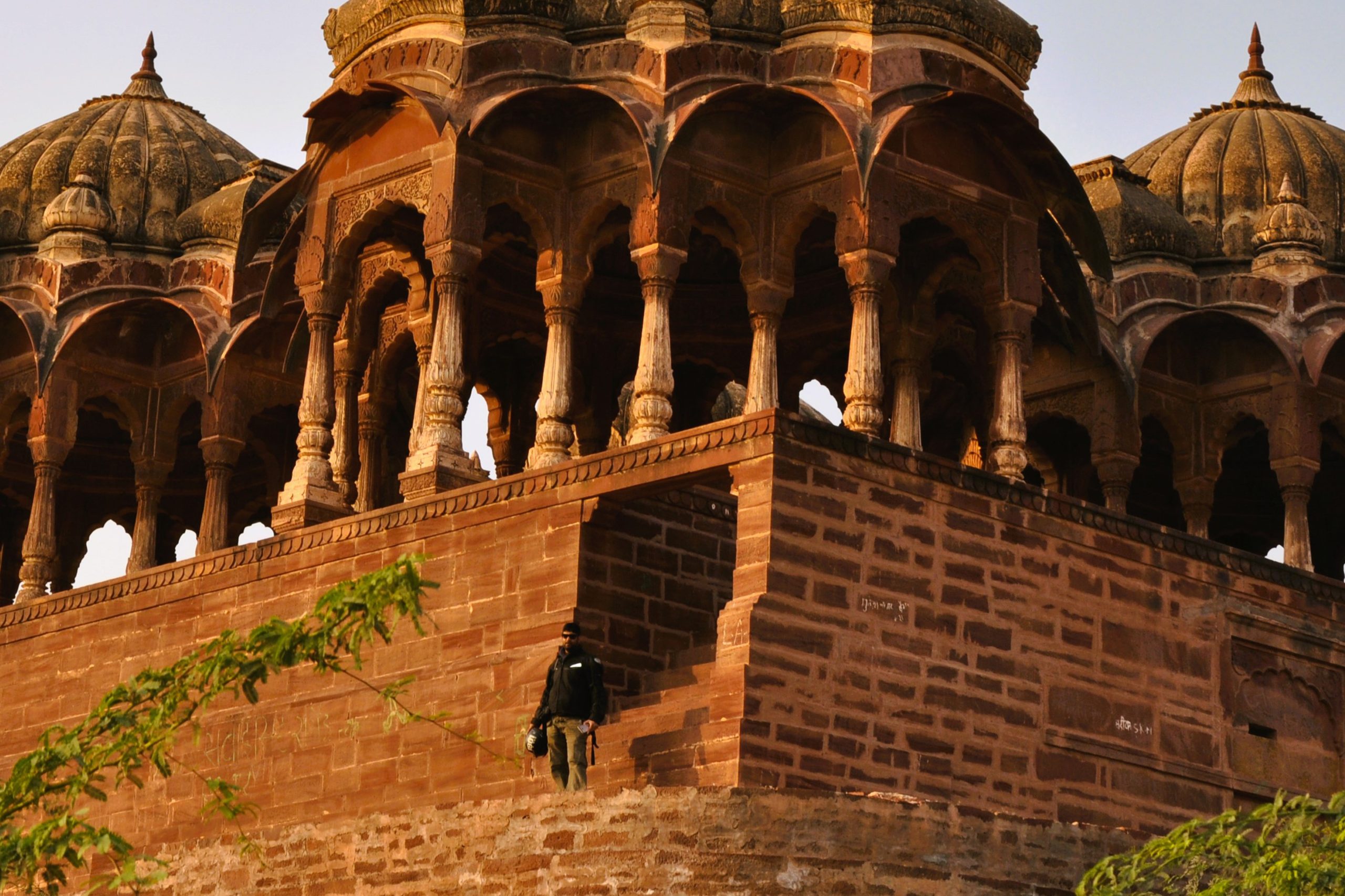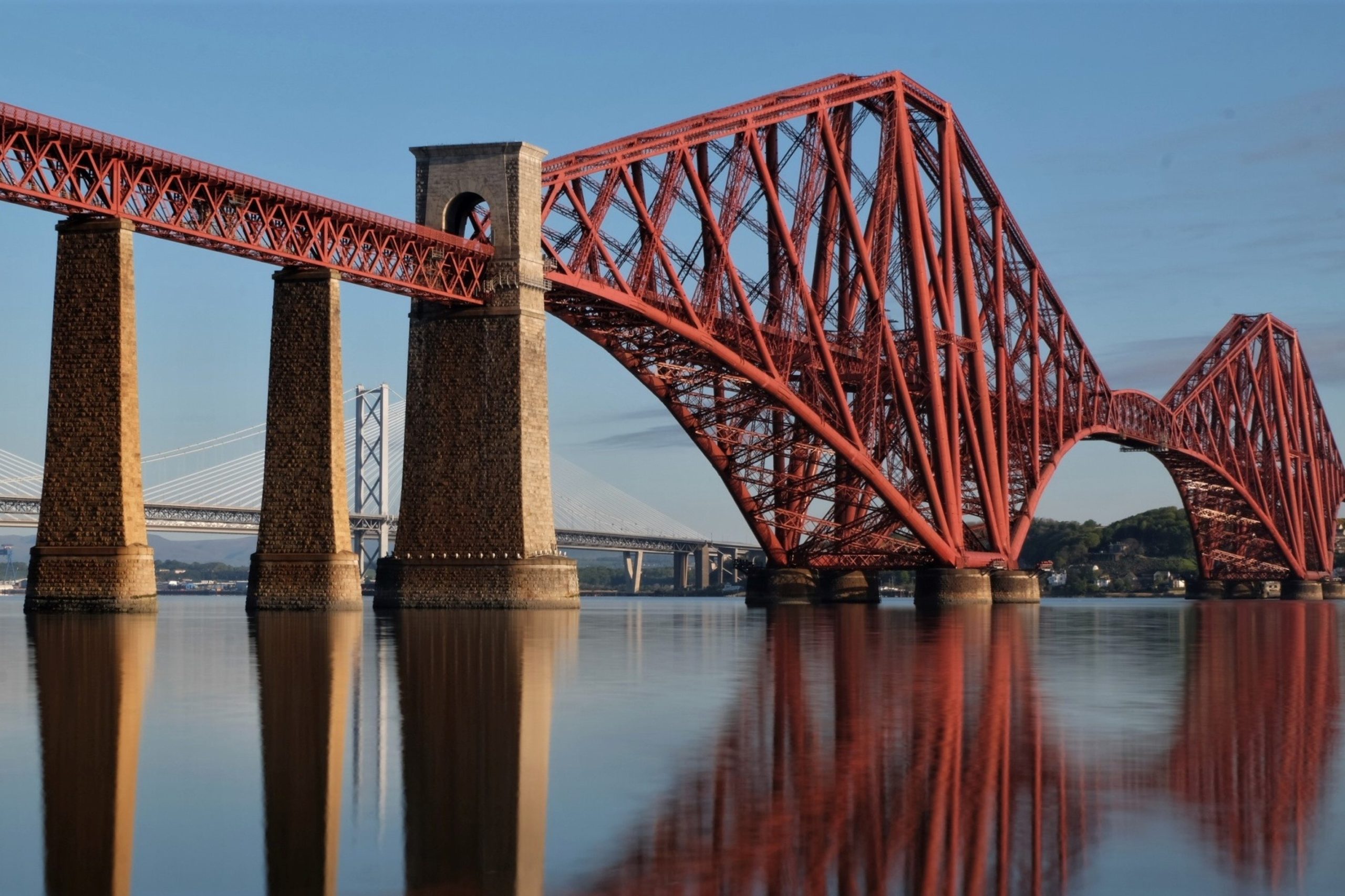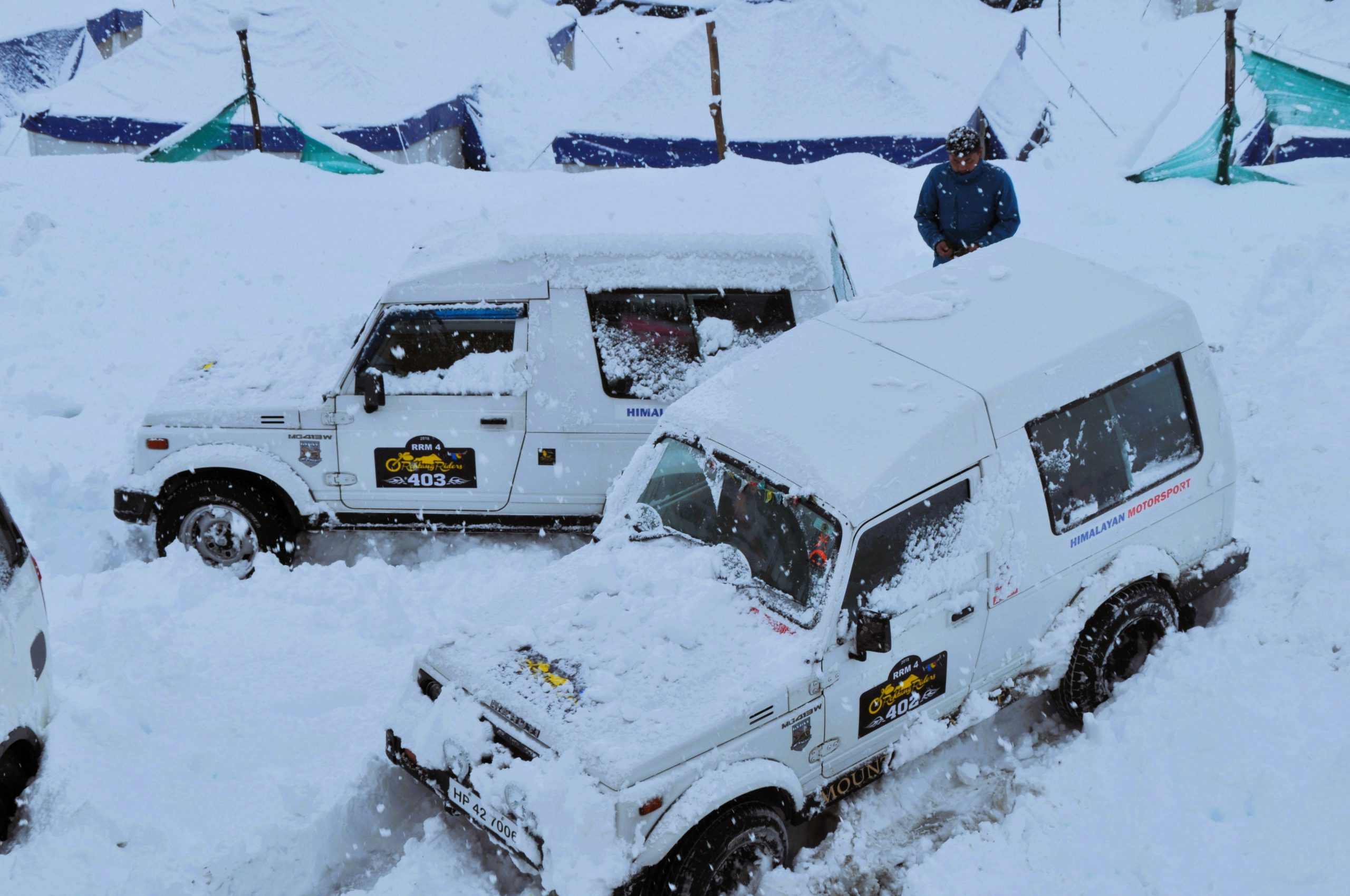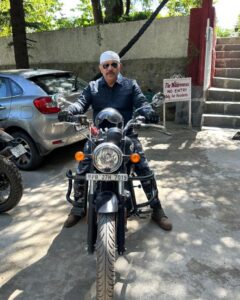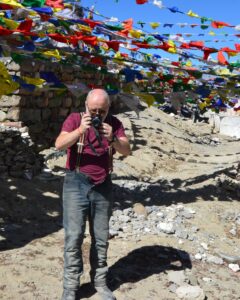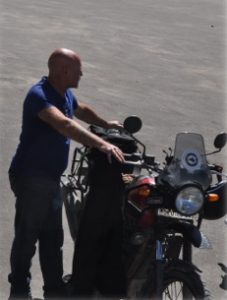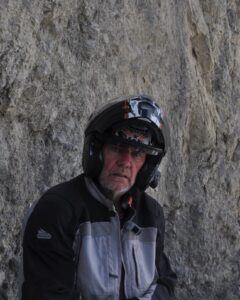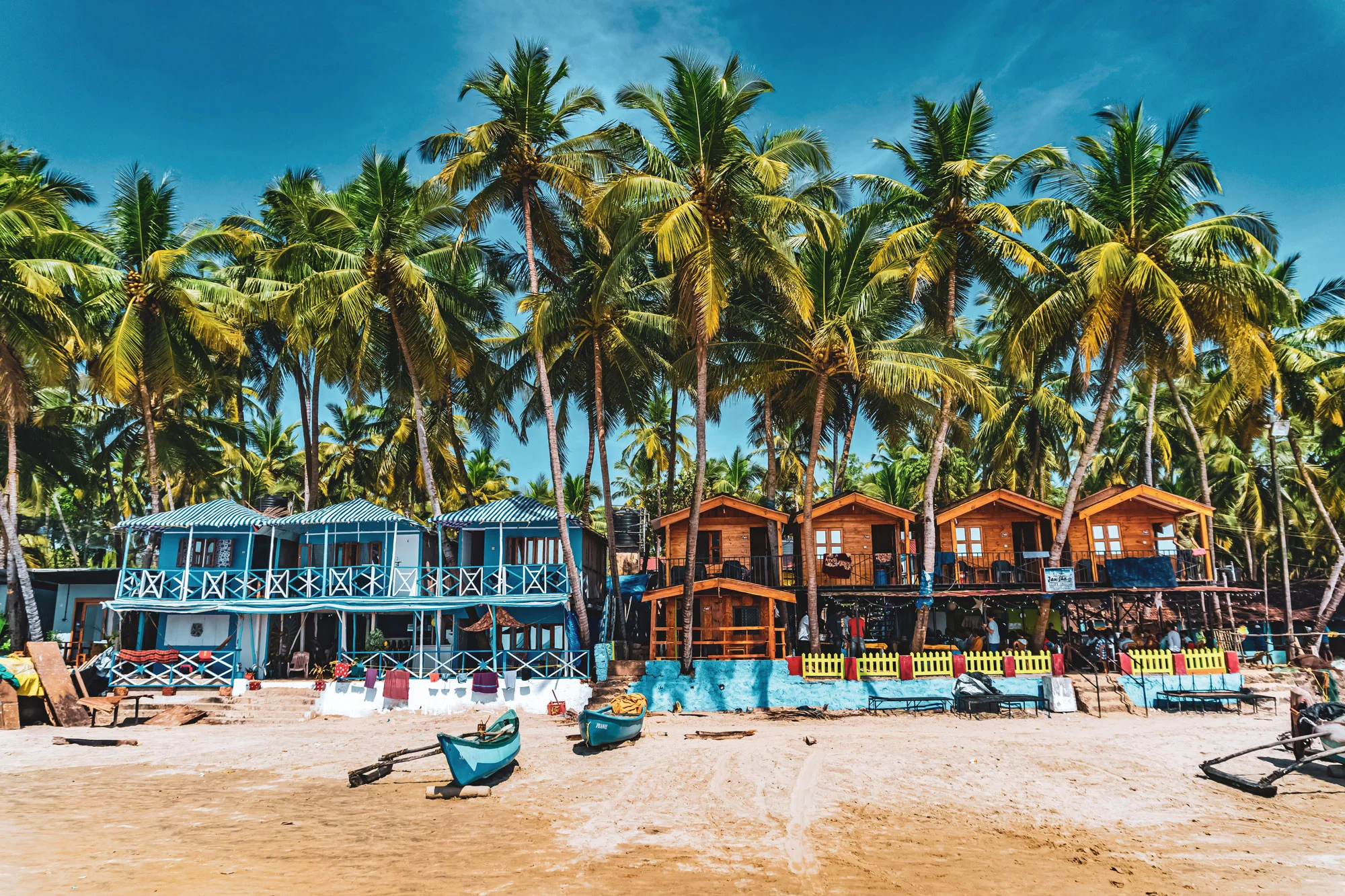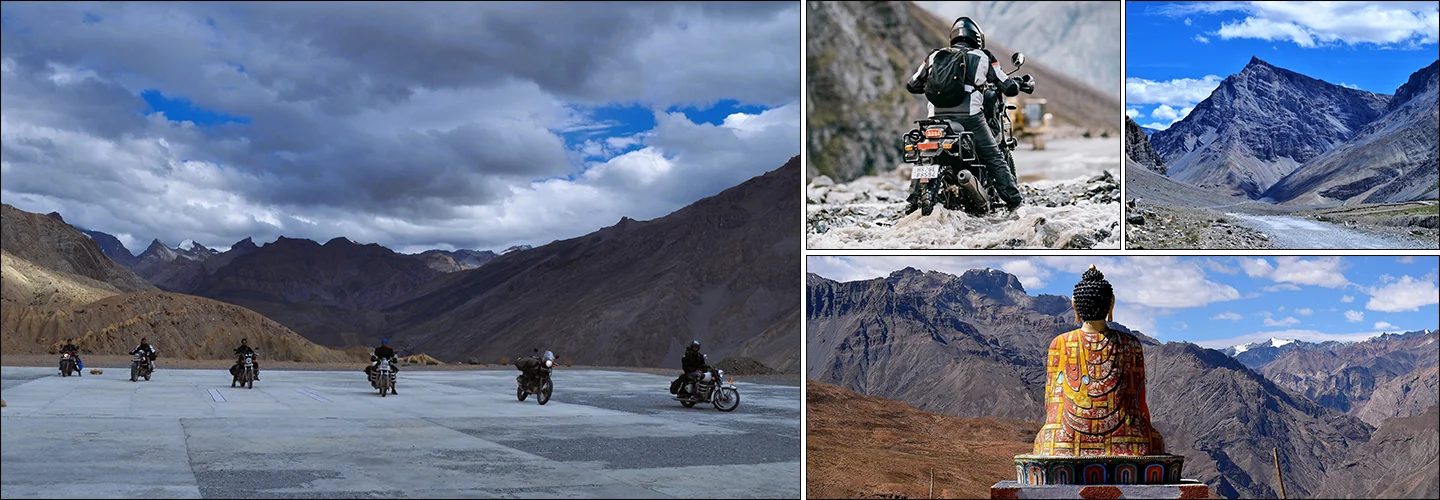
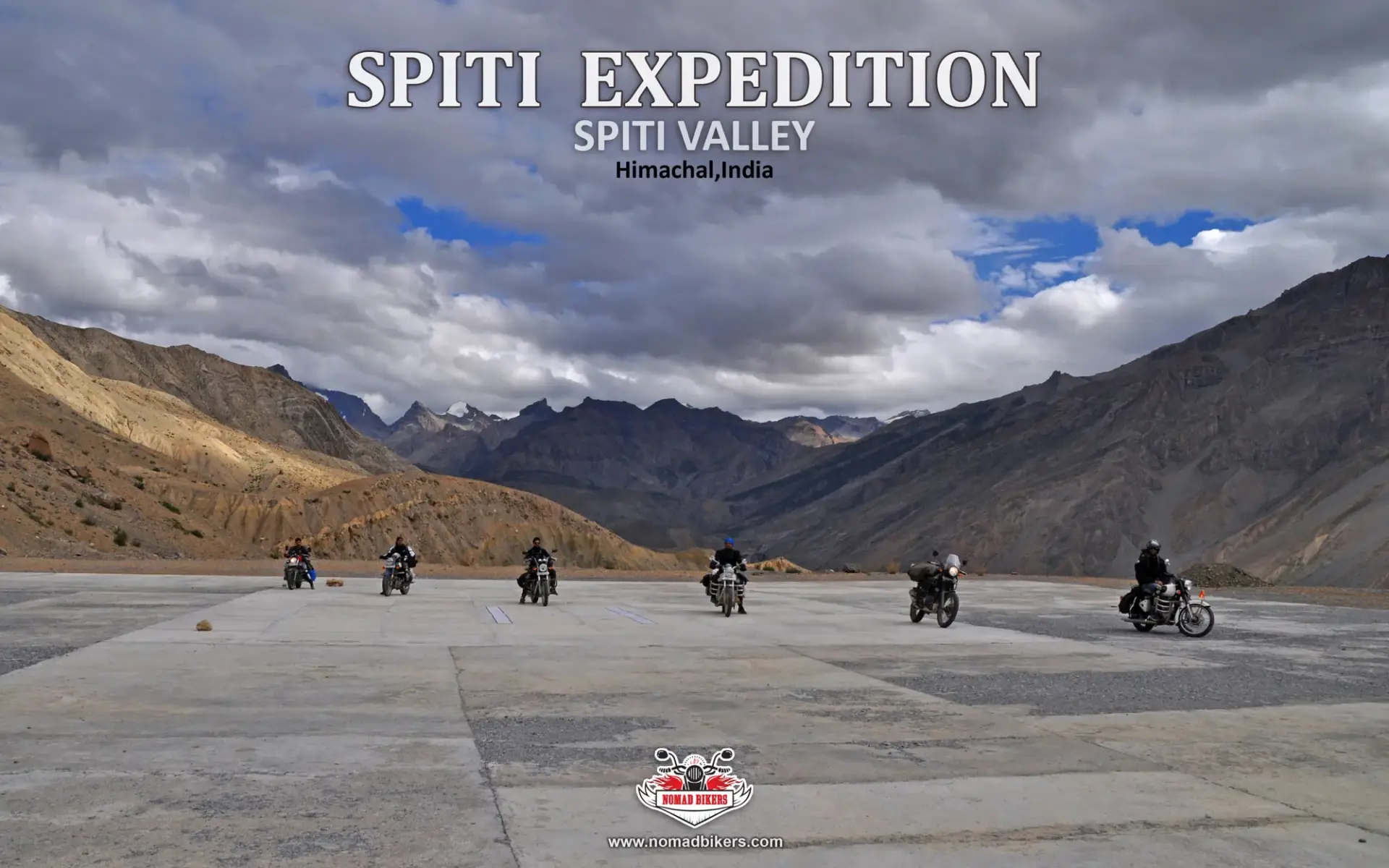
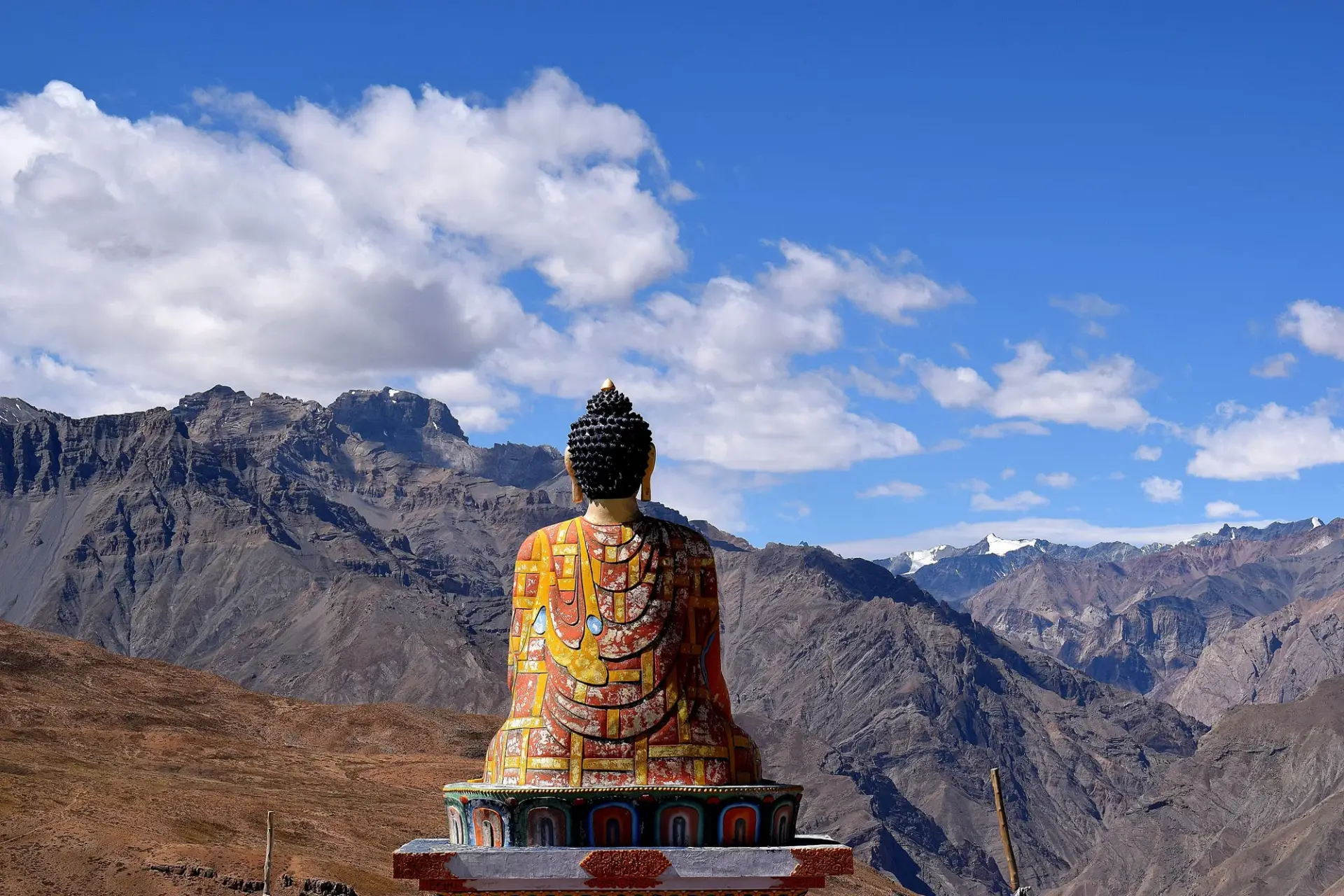
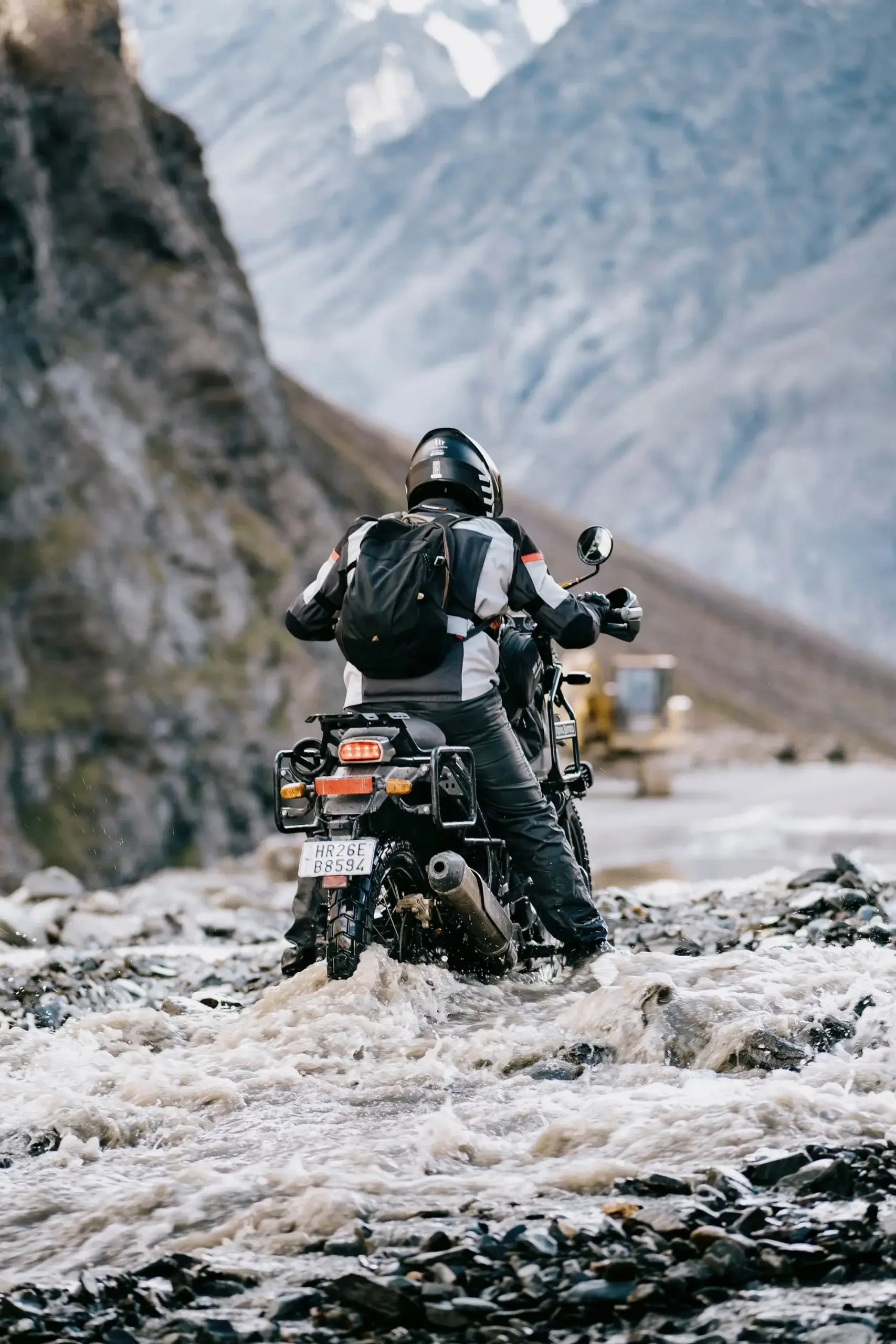
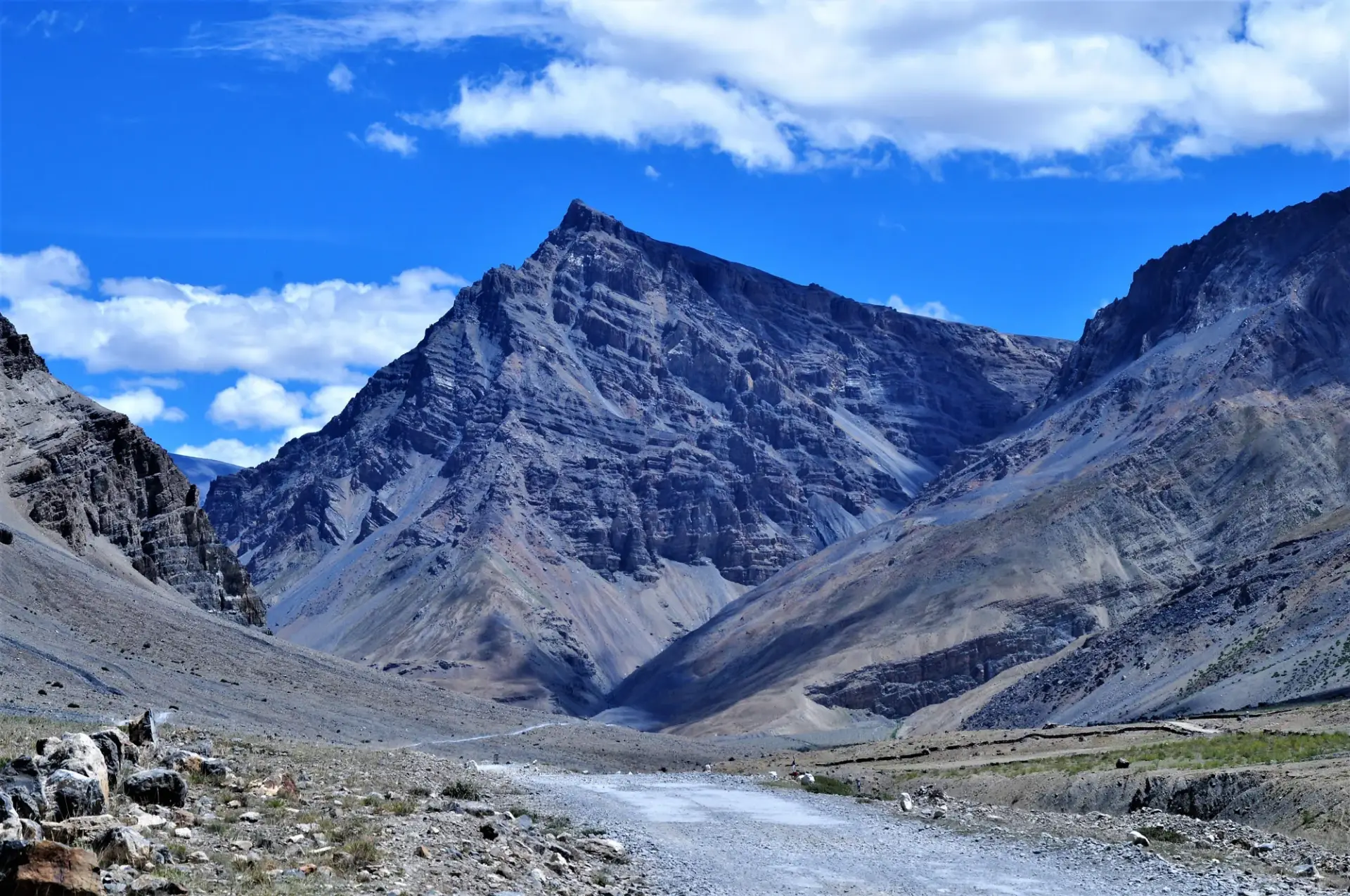
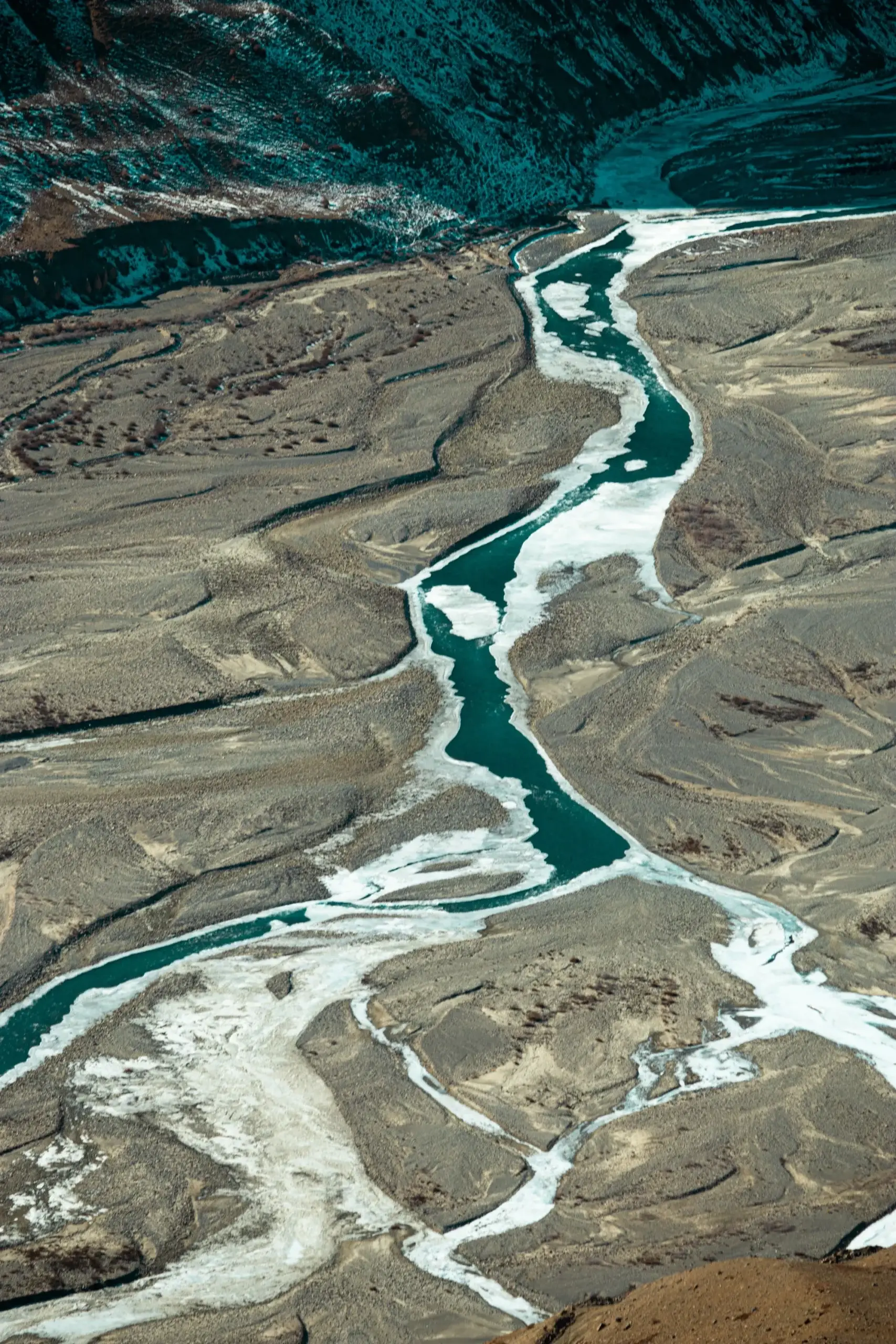

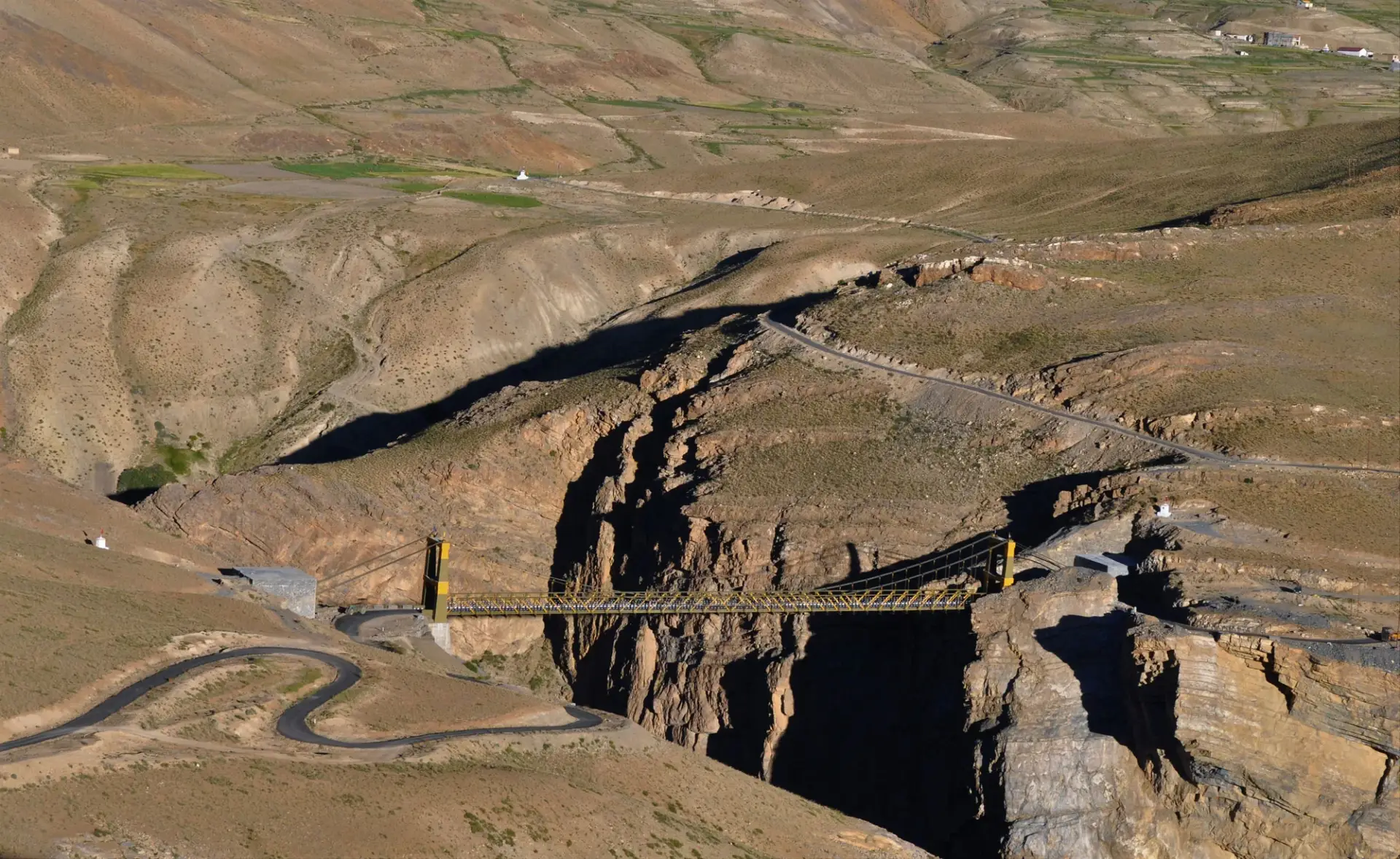
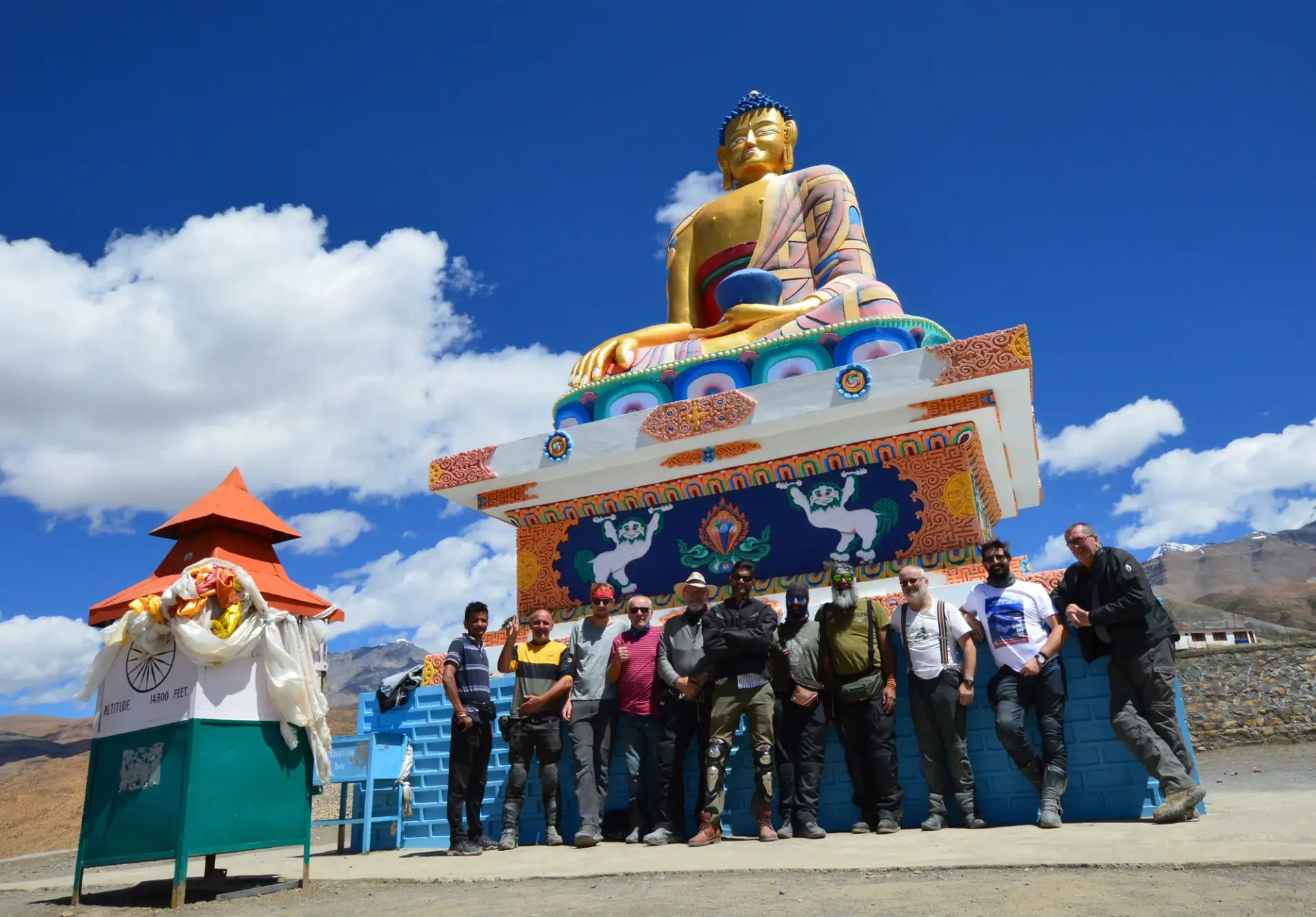
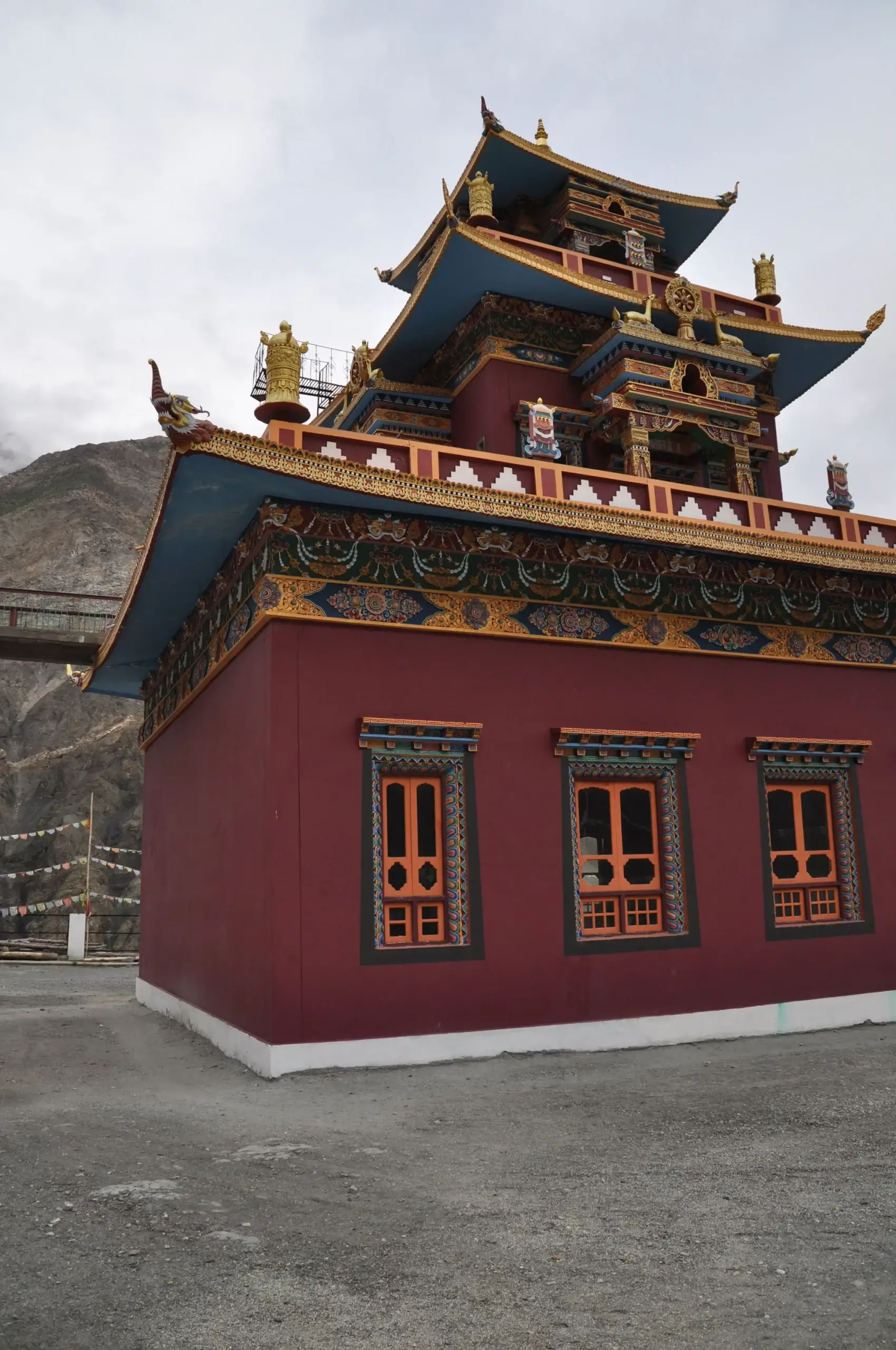
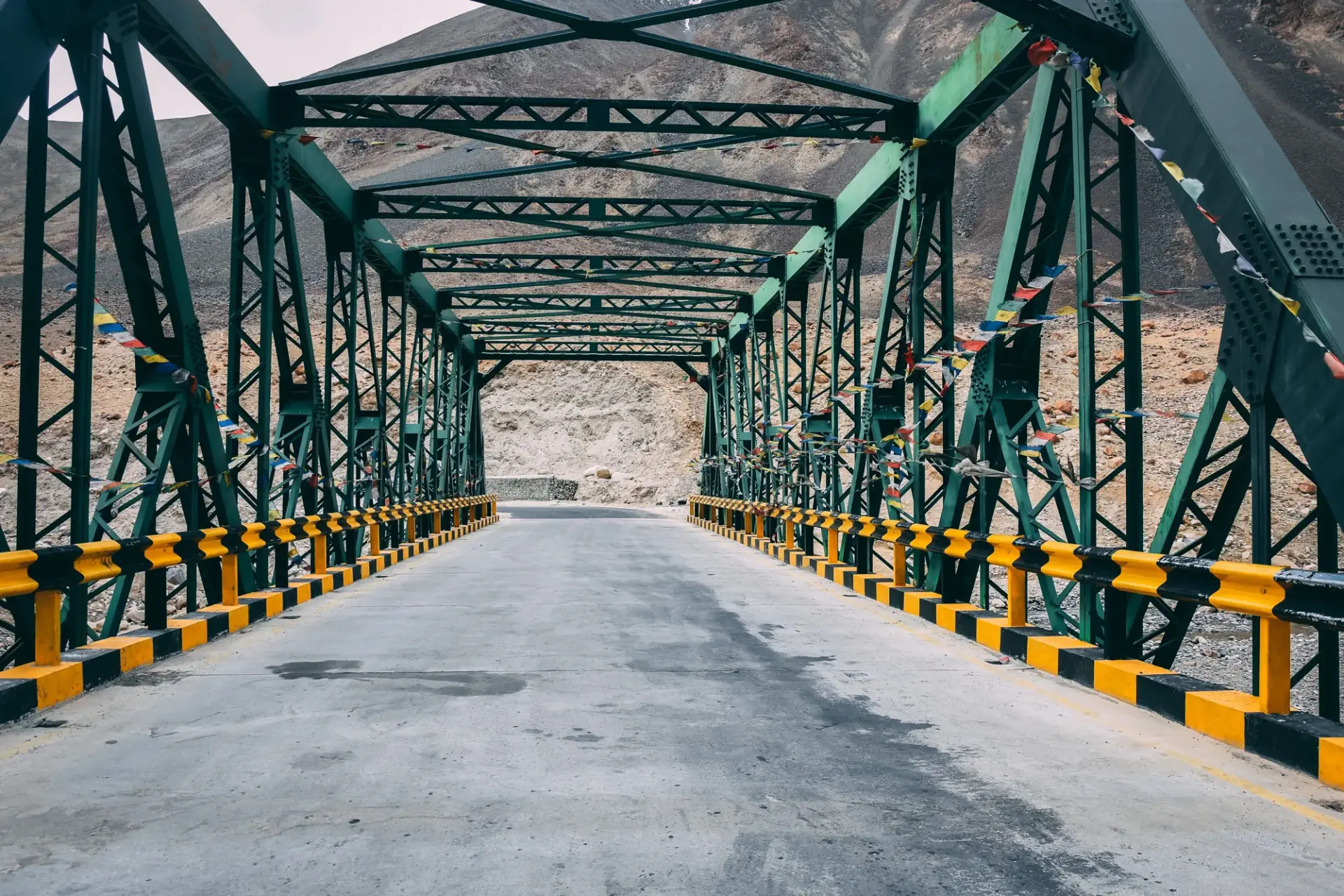
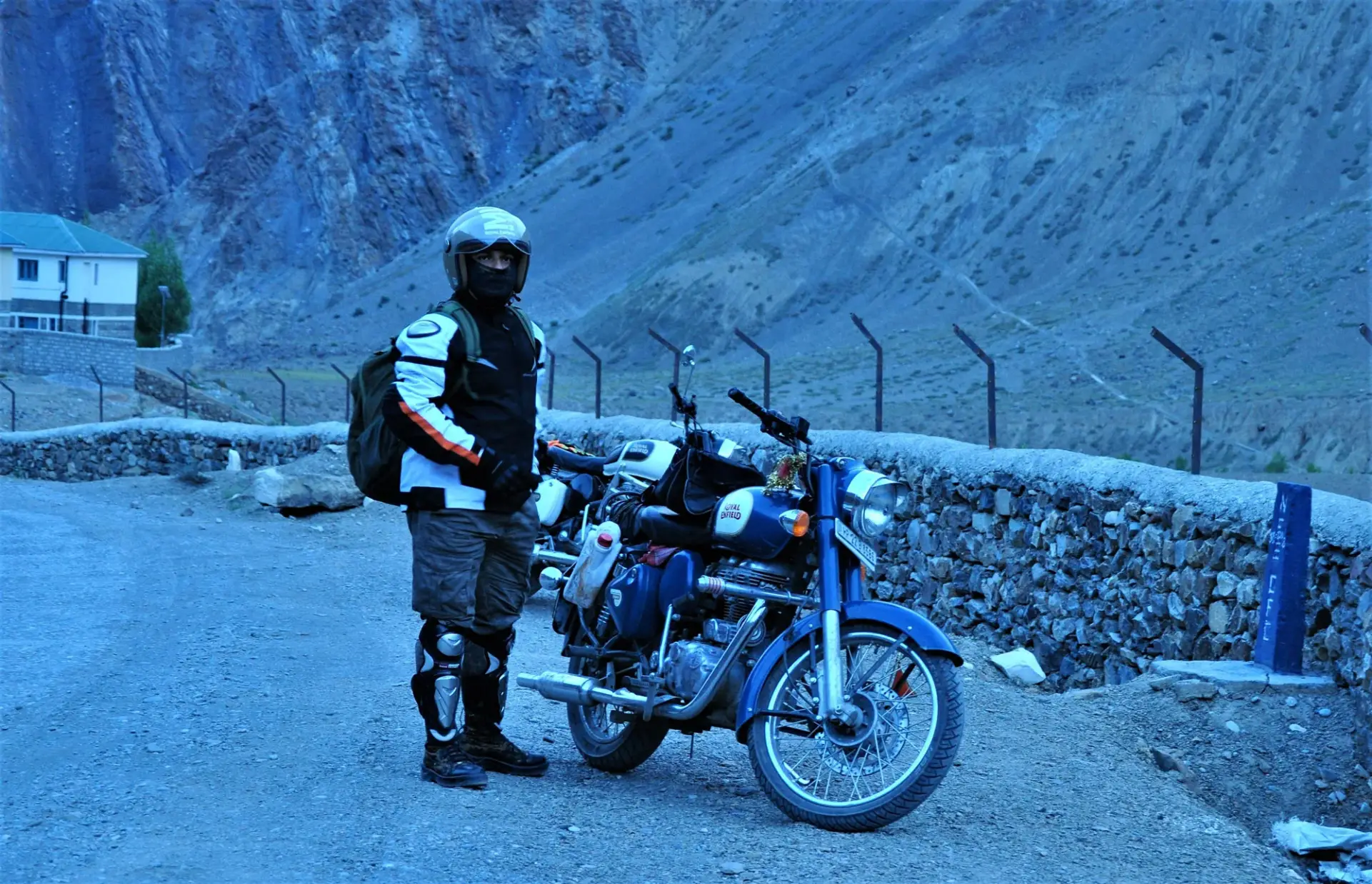
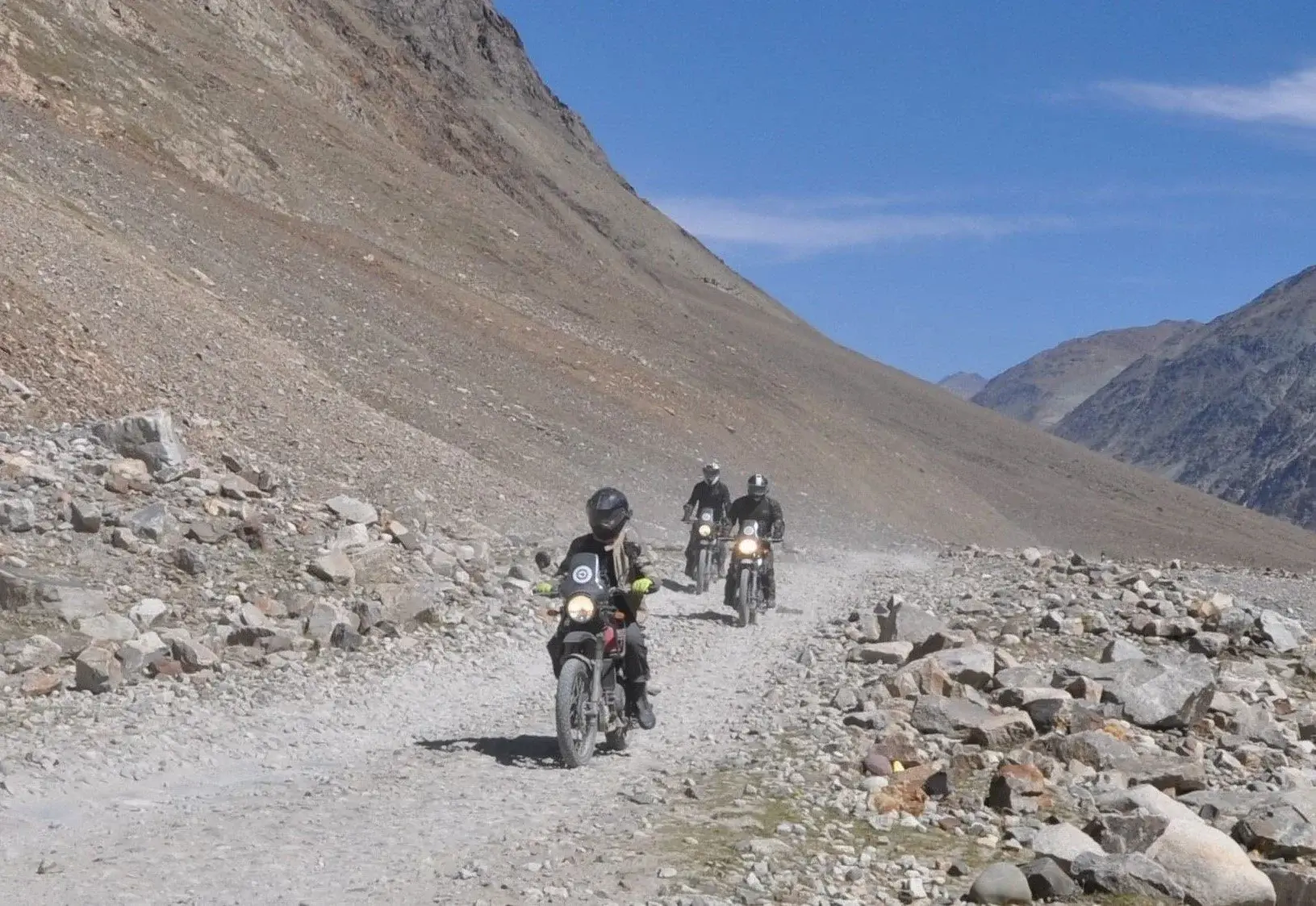
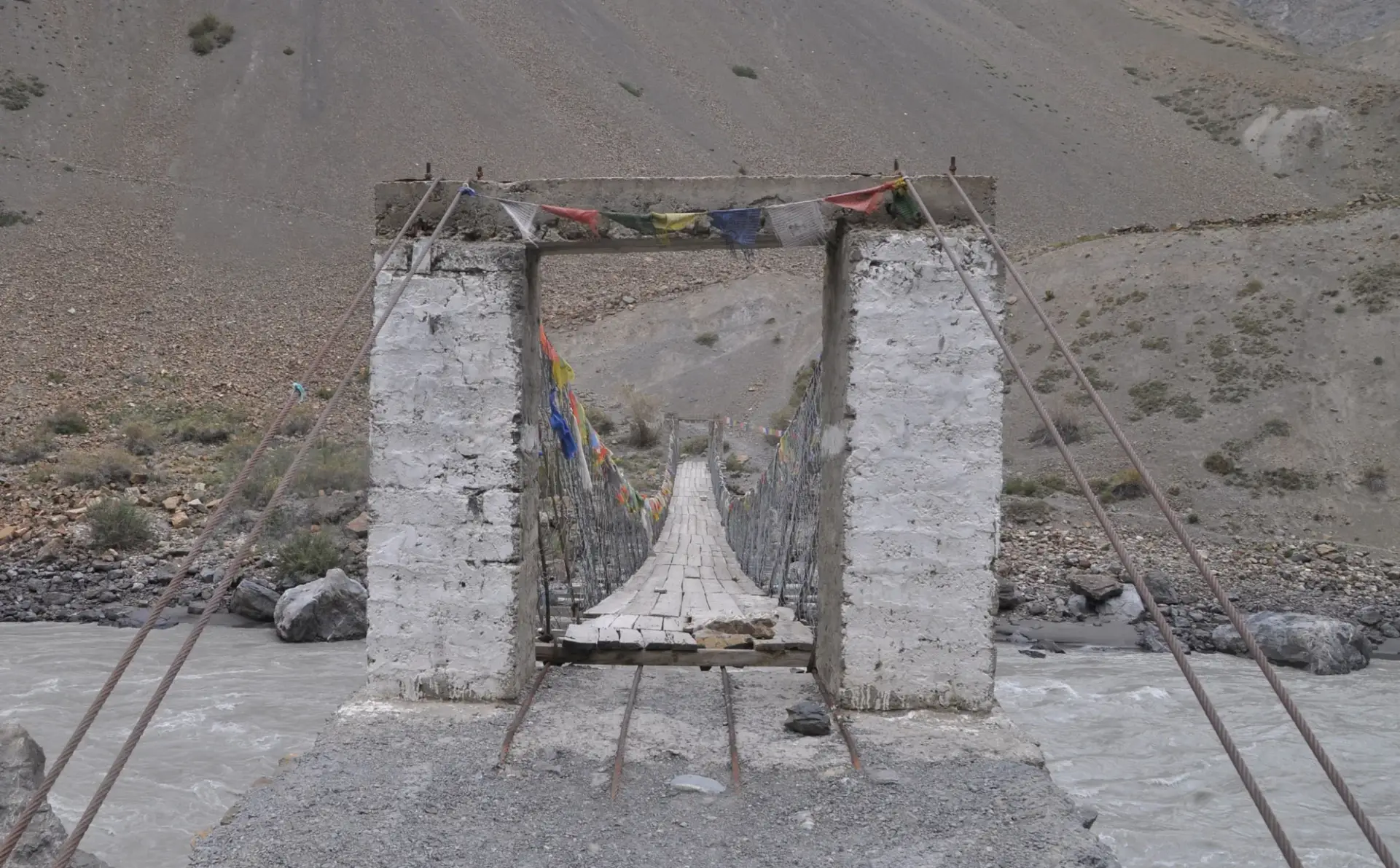
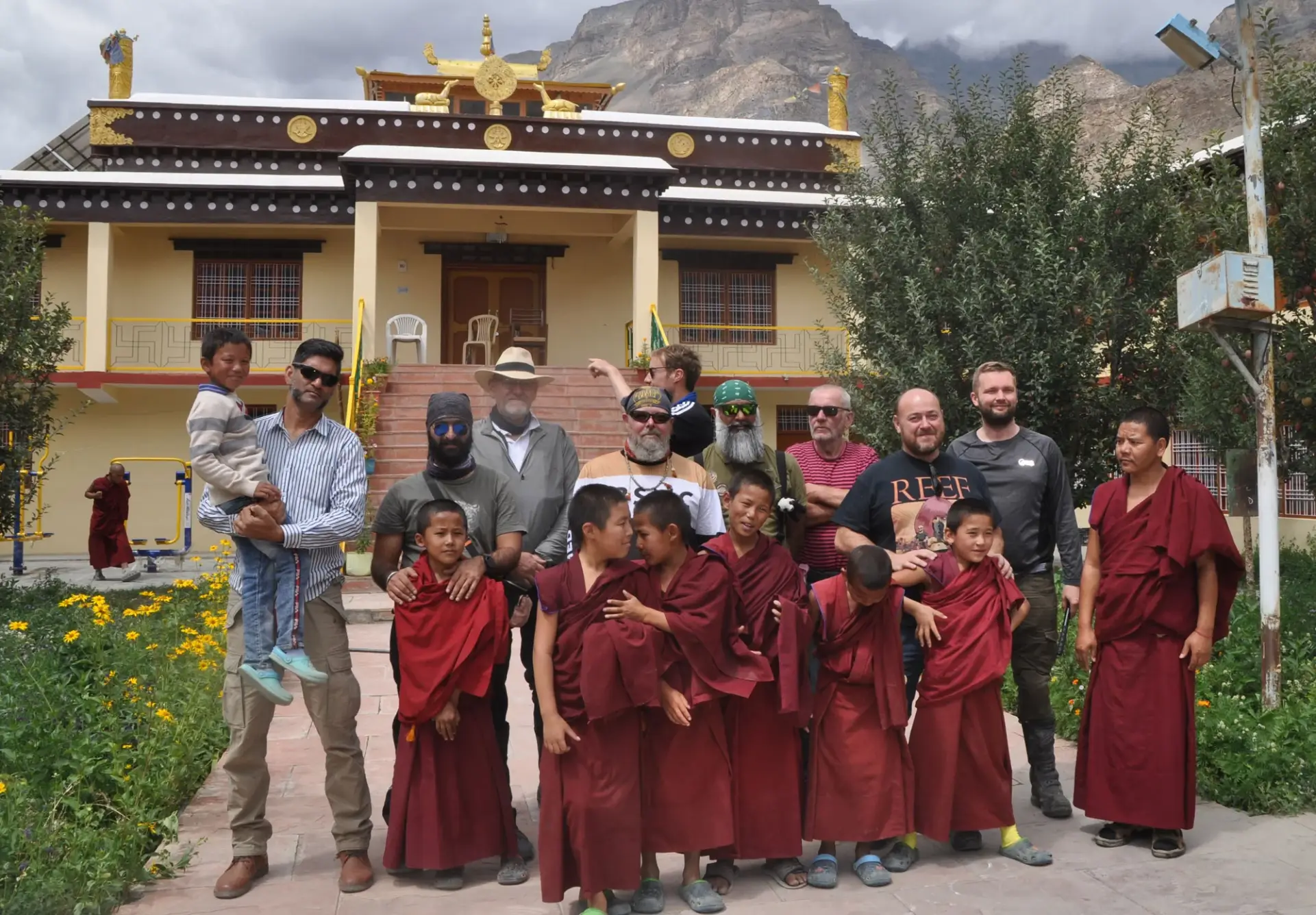
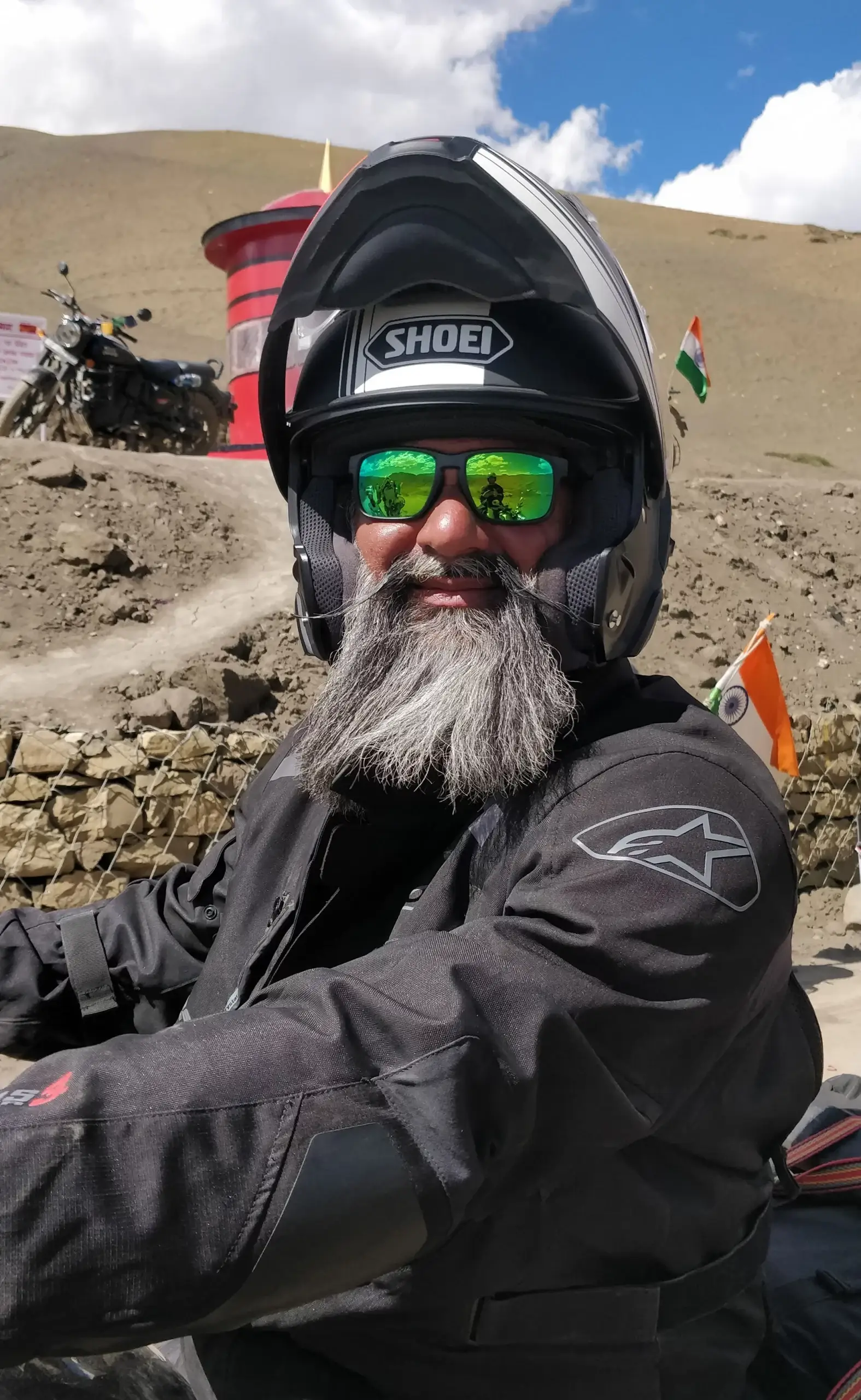
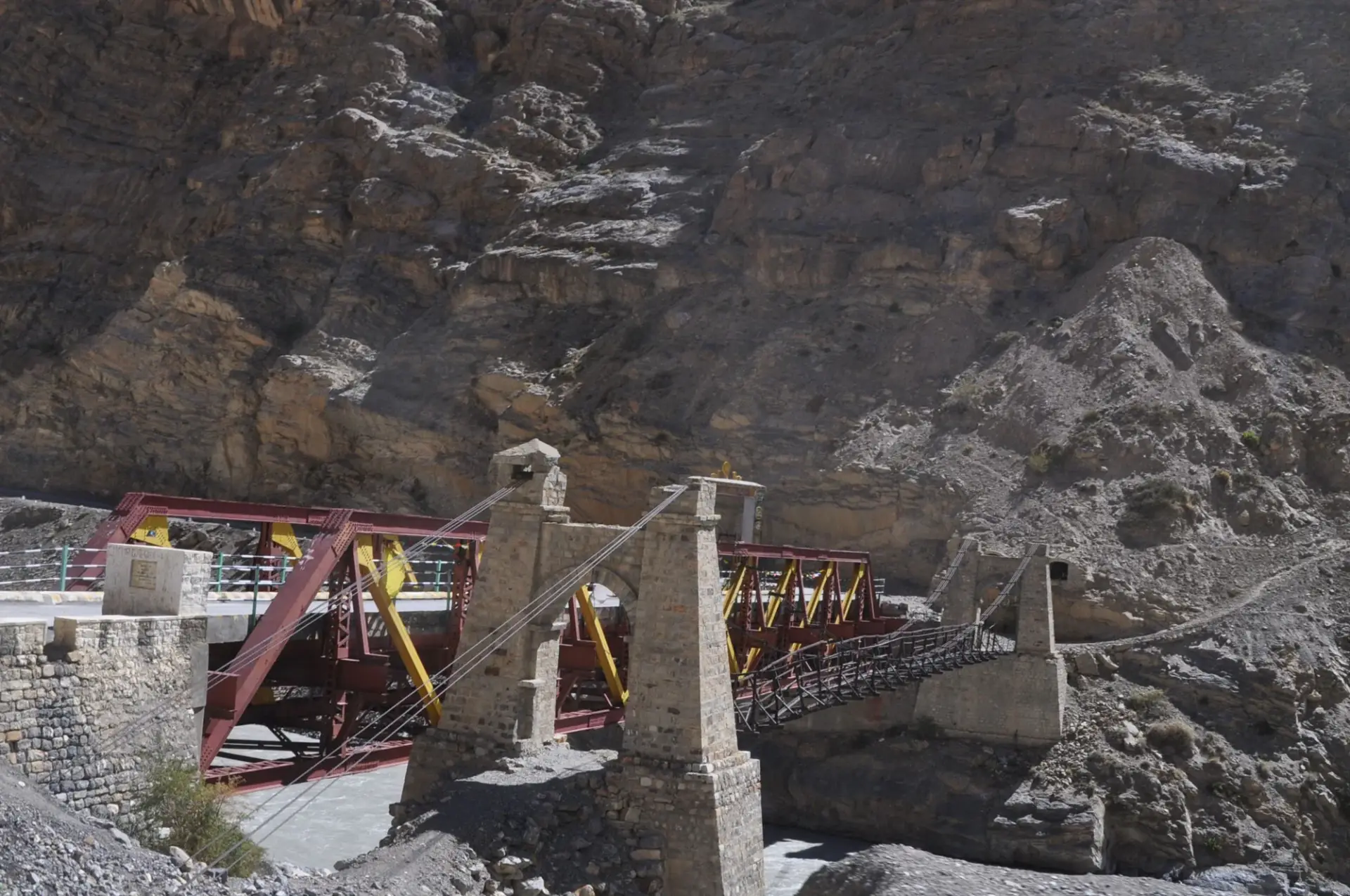
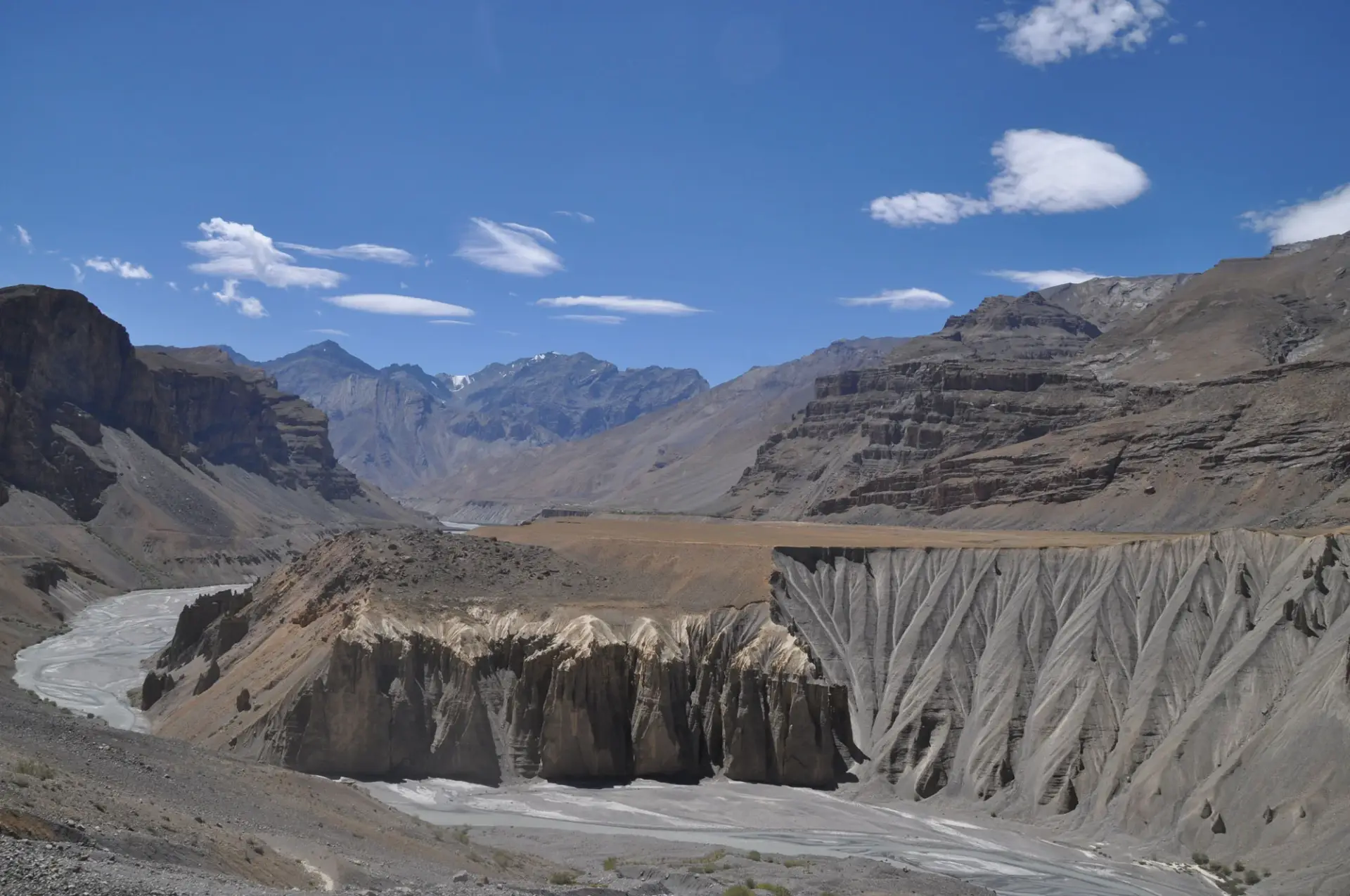





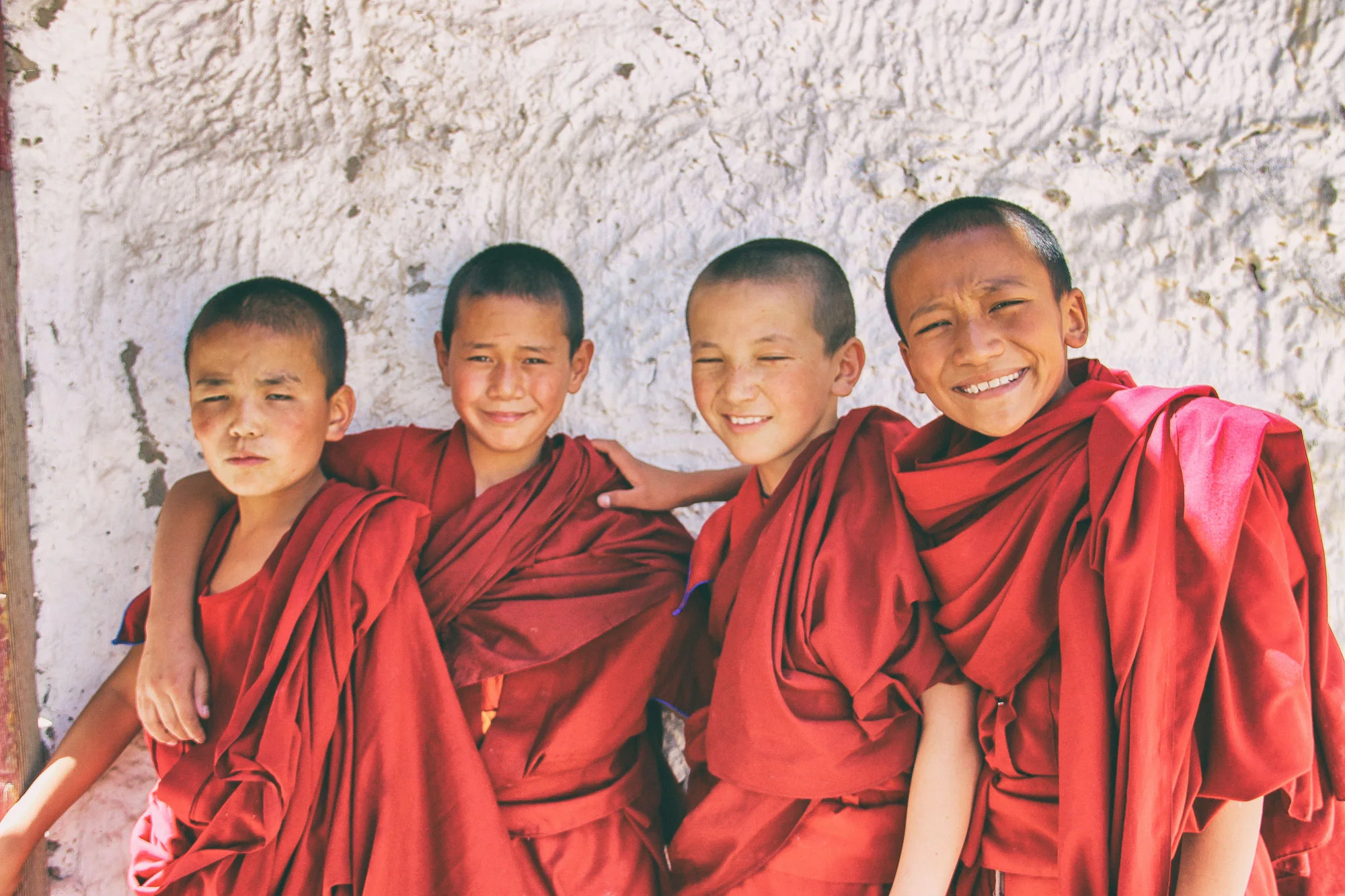











Upgrade your Moto Adventures with Complimentary Add-ons & Limited Edition Offer – Book Now
Spiti Valley, Himachal Pradesh 4.5/5 (1556 reviews)
 India
India Summer
Summer 12 Nights
12 Nights 5 - 6 Hours
5 - 6 Hours 4 days
4 days 1,800 KM
1,800 KM Himalayas
Himalayas  30% unpaved
30% unpaved 7 (out of 10)
7 (out of 10) Yes (with difficulty in places)
Yes (with difficulty in places) 30°C to 2°C
30°C to 2°C Chandigarh
Chandigarh
Overview of Spiti Valley Circuit
The whole Kinnaur-Spiti circuit is scenically spectacular, attracting hordes of motorcyclists on a Himalayan Road trip. This road has been featured on the History Channel & Adventure Magazines as one of the “deadliest roads” in the world. Spiti Tour is a mix of paved and unpaved roads with many stream crossings and waterfalls. It is an ideal place for an adventure motorcyclist. The route is not easy and can be difficult even for an experienced riders looking for best moto adventure in India.
The landscape however is so mesmerizingly beautiful, that it will make you forget everything else. It starts from lush green, changes to barren dessert mountains of spiti and back to lush green in Lahaul again. Apart from the adventure and the landscape, we also get to visit some of the oldest Buddhist monasteries and ancient hindu temples, visit the highest villages in the world and ride to Chandra taal stunningly beautiful high-altitude lake.
A Spiti Valley Expedition in the rugged terrain of Himalayas is a Rider’s delight, thanks to the thrilling roadways and rustic landscapes. Spiti in local language means 'The Middle Land'. Spiti because it lies between Tibet & the rest of India. It is tucked away between snow-capped peaks and is located far away from the outside world. A mountainous cold desert freckled with green patches over a dry weather-beaten face, fascinating Rugged valleys, windswept landscapes & quiet serene villages. Indo Tibetan Buddhism plays a major role in everyday life, testified by the piles of 'mani' stones, whitewashed chortens that house Buddhist relics, and prayer flags fluttering relentlessly in thin air. Echoes of "Om Mani Padme Hum' (literally, 'Behold the Jewel in the Lotus') by all bring good fortune and prosperity to the distant land. For centuries, Spiti has had an introversive culture where life remained focused around its Tibetan Buddhist Monasteries. It was loosely ruled by hereditary Princes, a self-styled 'Nono', and in between for brief periods, the valley was also attacked by invaders from neighbouring kingdoms.
In the last two decades, Adventure tourism has caught up fast in the valley that stayed in hides for so long, thanks to the surreal moonscapes, scenic Himalayan lakes and the harsh highlands nourished by prayers at thousand-year-old monastery that overlock the grey ribbon of the Spiti River. The glacial streams bring with it an abundance of goodwill and hope of life to the mountain folks. A slice of the moon landed on earth that drapes travelers in its pristine beauty in a way leaving them soulful! but never satisfied, such is the charm of Spiti. Get on a winding road leading to the highest motorable village of Komic or a narrow trail in the rugged terrain well accompanied by stunning landscapes on all sides and experience the untamed land of solitude and spiritualism first-hand.
Highlights of Spiti Valley Motorcycle Trip
- Set free your inner offroad adventurer, unleash your offroad Biking Prowess and Bring out the best of your riding skills while riding on motorbike expedition to Spiti Valley. It's time to rev up your passion for biking and explore the extraordinary.
- Chhitkul, the last village before the Tibetan border, feels like a remote outpost at the edge of civilization, where the crisp mountain air is laced with tales of ancient traditions & the serene Baspa River whispers secrets to those who listen.
- Join Tribal Folks in the tranquil mornings of monasteries, the air resonates with the soothing chants of monks, reverberating through the prayer halls. As the first rays of sunlight pierce through, butter lamps flicker & the fragrance of juniper incense wafts in the air.
- Perch yourself on the edge of the towering Chichham Bridge, one of the highest suspension bridges, and witness the awe-inspiring sight of a truck resembling a tiny ant from your vantage point.
- Make your riding buddies back home proud by sending them a postcard from Hikkim, the highest post office in the world, and let them marvel at your incredible Motorcycle Adventures in India.
- Mystic Tabo beckons with its ancient whispers and the ethereal aura of its monastery, where every step reveals secrets etched in centuries-old scriptures and you, leaving an indelible mark on your journey of self-discovery.
- Immerse yourself in the delightful aroma of Himalayan teas and Flavors of local Spitian cuisine. Indulge in traditional dishes such as Momos, Thukpa, Yak Cheese, and Butter Tea, savouring the unique culinary delights of the region.
- Walk on the banks of high altitude Lake Chandra taal located at 14,100 ft and mirrors the Himalayan peaks in its pristine waters, offering a reflection of celestial beauty that feels like a portal to another world.
- Learn new chapter in Star Navigation: With its remote location and minimal light pollution, Spiti Valley itinerary offers excellent opportunities for stargazing and Astrophotography.
Itenary of Spiti Valley Expedition
- Chandigarh is a city and a union territory of India that serves as the capital of the states of Punjab & Haryana. Chandigarh was one of the early planned cities in the post-independence India. It is located near the foothills of the Shivalik range of the Himalayas in north India. You will receive a warm welcome on arrival at Chandigarh. Check in to hotel. Meet the team and Fellow Riders. Local sightseeing.
- When Swiss architect Le Corbusier was commissioned with the job of designing Chandigarh from scratch in 1950, he conceived a people-oriented city of sweeping boulevards, lakes, gardens & grand civic buildings, executed in his favourite material: reinforced concrete. Seventy years on and the parks, monuments and civic squares are all still here, albeit somewhat aged. A road to Indian is mix of Ancient Stories and modern day success.
- Our Indian motorbike tour to the highlands of Himalayas will commence in the morning from Chandigarh via the Himalayan Express Highway and NH 22. As we drive along the low hills, we will gradually ascend to an altitude of 6,500 ft and arrive at Shimla. The beautiful mountain road winds through pine, deodar, and oak forests, offering glimpses of charming small villages along the way. By evening, we will reach Kotgarh, where we will spend the night at a cozy cottage nestled in an apple & cherry orchard.
- Inbetween we made a pit stop for freshly roasted cobs of corn prepared by the roadside over smoking logs, freshly made sugarcane juice and locally grown cherries.
Note: We try to get your Motorbikes delivered as soon as possible, this allows us to kickstart your adventure with a Short ride in Chandigarh, helping you acquaint yourself with both your ride machine and the local road culture. Given the diverse terrains we encounter in the Himalayan highlands during our Himalayan Motorcycle Tours, it's essential to become well-acquainted with your machine's capabilities and understand its limits and strengths."
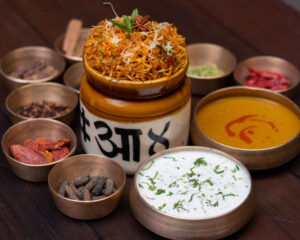


Shimla's allure stems from its rich history as the British summer capital during the British Raj, creating a captivating ambiance. The allure of Shimla as a favourite destination for British travellers lies in the opportunity to witness one of the former capitals of the British Empire. Shimla's association with the Great Britain left a lasting impact on the town's culture, architecture & heritage. Even after India gained independence in 1947, it continued to be a popular destination & a reminder of the colonial era. Many colonial-era buildings & landmarks, such as the Christ Church, the Viceregal Lodge & the Gaiety Theatre, still stand as testament to Shimla's connection to the British Raj.
Today, the British influence is evident in Shimla's colonial architecture, the remnants of the British administrative system, and the presence of educational institutions like boarding schools that were established during the British rule. The town's historical association with the British Raj makes it a significant destination for British and European tourists interested in exploring India's colonial past and experiencing the blend of British & Indian cultures.
With pleasant summers & snow-covered winters, it remains a popular weekend getaway for road Trip year-round. Beyond its charming colonial buildings against the backdrop of the majestic snow-capped Himalayas, Shimla offers much more. From ice skating in the upper reaches of the region to hosting the MTB Himalaya, the largest mountain biking race in Southeast Asia, there is no shortage of adventure. Additionally, Shimla boasts unique treasures such as the 16th-century Tibetan script "Arya Astha Sahasrikas Prajna Paramita" and the Jakhu Temple Shrine with Lord Hanuman's footprints, adding to its cultural significance.
While exploring Shimla, visitors can expect to encounter tattoo artists around every corner but should note that food is not available after midnight. The city is also known for its legendary ghost stories, such as Chudail Baudi, and its fantastic cultural heritage, making any visit truly memorable. Notably, English Novelist Rudyard Kipling, the Nobel laureate writer, spent his summer vacations in Shimla, leaving behind memories of his renowned work, "The Jungle Book." The Viceregal Lodge, originally a residence for viceroys and governors-general of India, offers a glimpse into the city's historical significance. For those seeking tranquility, a peaceful walk through dense forests and a quiet picnic can provide a moment of solitude.
- Shimla Mall Road: Known as "The Mall" or "Mall Road," this main shopping street serves as the town's lifeline and offers a range of cafes, restaurants, and social hangouts, attracting both locals and tourists.
- Christ Church: Dating back to 1857, it is the second oldest church in Northern India and showcases neo-Gothic architecture. Situated on The Ridge, it is a prominent landmark of Shimla.
- Scandal Point: This spot gained its name from the scandalous elopement of the Maharaja of Patiala with the daughter of the British Viceroy, creating a scandal of the highest order.
- Jakhu Hill: As the highest peak around Shimla, reaching an altitude of 8,000 feet, it offers a magnificent view of the surrounding valley.
- Shimla State Museum: This museum houses numerous ancient artifacts that display the cultural wealth of Himachal Pradesh.
- Statue of Lord Hanuman at Jakhu Hill: Located at an elevation of 8,500 feet above sea level, this 108-foot-tall statue showcases the heritage and reverence of Shimla.
- Viceregal Lodge: Constructed in 1888, this lodge, designed by British architect Henry Irwin, served as the residence of the British Viceroy of India.
- Rothney Castle: Once the home of Allan Octavian Hume, the British civil servant who founded the Indian National Congress in 1885.
- In addition to these attractions, here are some other activities you can indulge in while visiting Shimla:
- Take a Walk on The Ridge: This area near Jhaku Hill and the Observatory hosts Shimla's fairs, festivals, and functions. Here, you can admire colonial-style buildings, a church, a library, and a statue of Mahatma Gandhi.
- Trek to Jhaku Hill: Enjoy a scenic trek of about 30 minutes through lush forest terrain to reach the top of Jhaku Hill, offering mesmerizing views of Shimla and the Shivalik range.
- Shop at Mall Road: Explore the famous Mall Road for shopping and purchase Indian souvenirs.
- Ride the Toy Train: Embark on a memorable journey aboard the renowned Toy train of Shimla. This 96-kilometer ride takes you over 864 bridges and 102 tunnels, including the longest one at Barog, providing picturesque vistas throughout the journey. The UNESCO heritage train's ascent on winding tracks surrounded by ancient trees feels like a storybook adventure. Despite being over a century old, the "toy train" continues to captivate the hearts of its travellers.
Note: When you ride from Shimla to Kotgarh do make note in your Himalayan Diary that you take a pit stop for a Pint of Lager in the bar of Wildflower Hall. This property at altitude of 8,250 ft overlooks 23 acres of age-old lush greenery, aromatic cedar trees, with the Greater Himalayas gleaming in the distance.

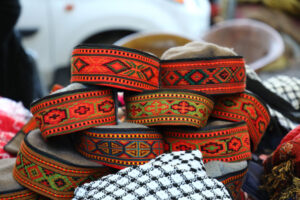
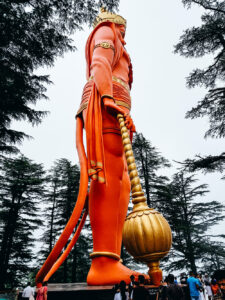
Kotgarh situated 82 km from Shimla on the old Hindustan-Tibet road, is also lovingly called the apple bowl of India. It is famous for its apples and acres of apple orchards. Samual Evan Stokes is said to have planted the first apple trees in India here. There is an interesting story about how he got apple to India. Kotgarh is a quaint scenic place. The picturesque terraced fields dotted with apple trees and bungalows is feast for the eyes.
Hattu temple is a popular trekking trail and offers a panoramic view of the Pir Panjal & Dhauladhar ranges from the top. The elliptical shaped Tanu Jubbar Taal is a scenic location & has the famous Naag Devta temple built along its sides. The beautiful wooden St. Mary's Church, with its old graveyard stands as a reminder of the bygone era. Milan Devta Temple (Chatur Mukh), with its beautiful architecture constructed in Shikhar style, is dedicated to diety Deo or Deota. There are interesting accounts by moto bloggers about this mandir.
Note: Although you may not be riding in the midst of rainy season, it's worth mentioning that Himalayan weather can be unpredictable, and rain showers can surprise you at any time. Hence, it's vital to equip yourself with suitable riding gear, taking necessary precautions for unexpected rain, and packing extra changes as a precaution. You might even come across river crossings or ride beneath cascading waterfalls, making preparedness for such scenarios absolutely crucial. Stay alert and flexible to handle the ever-changing weather conditions, ensuring a safe and delightful riding experience.
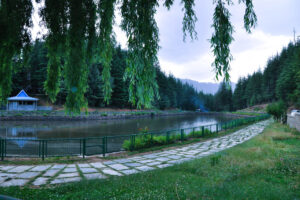
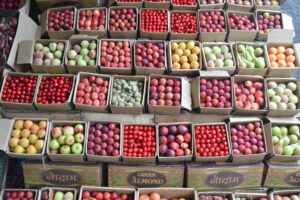
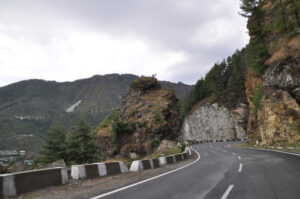
Sarahan is small picturesque Himalayan Hamlet in the Sutlej valley and is the Gateway to Kinnaur. Located halfway up a high mountain side, the road to Sarahan winds past flowering pine trees that give way to stately oaks. Encircling the Bashal peak are trees of smooth birch and variety of wildflowers and rare medicinal herbs. Adventure seekers can take a day trek to the Bashal peak and enjoy the charming view of partially snow-coverred mountains beyond the green grassy hills. Deep down the alley flows the Satluj river and across lies the snow-clad Shrikhand Mahadev peak 17,150 ft named after Lord Shiva.
This sparcely populated region has many ancient legends and here is the famous Goddess Bhimakali Mandir regarded as the Fifth most sacred Shaktipeeths. The temple with its wealth of carvings is an example of Himachal's indigenous form of architecture known as the 'Kathkuni' style. It is believed to be at least 800 years old. This temple complex includes other temples such as Narsingh shrine of Bhairon and Lord Raghunath. Other attraction is the nearby Jeori hot water springs.
We paused to capture images of both male and female folks donning distinct Kinnauri hats in shades of grey and green, and to savour a cup of coffee brewed using a kerosene stove. This was where we first laid eyes on snow-capped peaks and decided to take a side trip to spend a night in the Mastrang of Sangla. Our objective was to hike along the Baspa River.
While traversing the Hindustan-Tibet Road, We were truly amazed by the immense level of effort invested in its construction. This road, which used to connect the former princely state of Rampur Bushair, serving as the primary gateway to Tibet, stands as a testament to human ingenuity. Despite strained relations with China leading to its abandonment, the sheer feat of constructing this road using only hand tools, without the aid of modern machinery, is truly remarkable.
The inception of the Hindustan-Tibet Road in Himachal Pradesh dates back to 1850, and its construction presented an immense challenge due to its location amidst one of the world's highest mountain ranges. The manually carved half-tunnels, snaking through rocky cliffs, serve as tangible evidence of the unwavering determination and commitment displayed by the labourers who toiled to build this highway. Notably, the monumental task of tunnelling through the massive rocks at "Khimring Dhankh," a cliffy region of the Hindustan-Tibet Road, remains unparalleled, representing the largest stretch of rock tunnelling for a road to this day.
Note: During your briefing, we will provide adventure riders with essential information regarding Acute Mountain Sickness (AMS) and the necessary precautions to take. Our daily briefing will cover road conditions and potential hazards along the way. We highly recommend reading our blog on Acute Mountain Sickness to ensure you are well-informed beforehand.
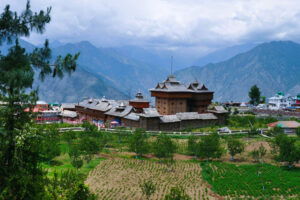
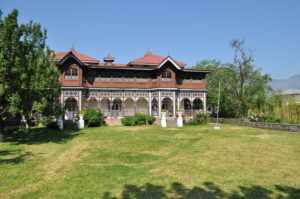
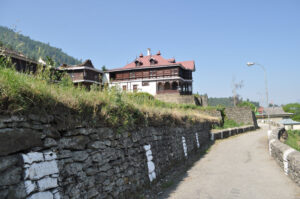
This is a land of mountain villages with slate-roofed temples, vast apple orchards, plunging gorges between towering snow-capped peaks, and hair-raising roads. A study by the IIT Delhi in 2016 established that Kinnaur district has the cleanest air in the country. Chhitkul The Last Village is a heavenly destination is the last point from where the visitors are not allowed to go forward. Seated on the bank of Baspa River, this village remains covered with snow adding tons of beauty to its site. One can capture the picturesque views of this last village in India or can go on trekking for an adventure. This place is also famous among adventure camping places and nature walks that are worth visiting. Baspa Valley is an ideal location for hikers and environment enthusiasts who want to explore the woodlands and wildlife refuge. Trekking and sightseeing in all parts of the district including Kinner Kailash Shivlingam trek, Bhaba Valley trek, Rupin Pass trek, Yulla Kanda trek, and Gangotri Trek.
Note: Though Tips on Safe riding is given everyday but do remind our Road Captain to discuss Precautions for Down Hill Biking. Downhill biking in mountains can be an exhilarating and thrilling experience. However, it's crucial to prioritize safety to ensure an enjoyable ride. Please read our Blog on safety tips for biking in Himalayas.
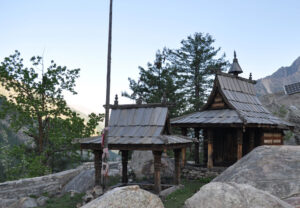
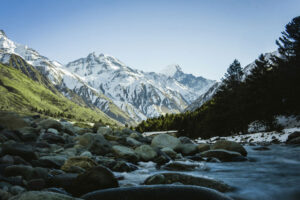
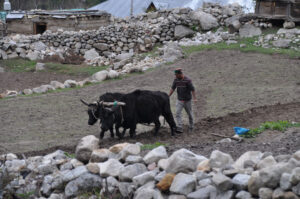
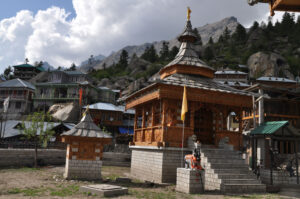
Sangla is unquestionably a destination for those who enjoy the outdoors, where they may savour the peace and clean surroundings of this unusual location in Himachal Pradesh. The Kamru Fort ranks among Sangla’s most popular tourist attractions. The meandering, bubbling Baspa River, which is well-known for its trout fishing, also flows through the region.
This Spiti Moto tour is highly social, with the riding crew and bikers sharing meals together, fostering a sense of camaraderie akin to that of a motorcycle gang. The itinerary features several days and afternoons earmarked for leisurely pursuits, such as sightseeing, playing volleyball or snooker, swimming, or simply unwinding, contingent on the amenities provided by the Bike mad lodgings.
We try to limit our chai stops, which serve as a convenient means of breaking up the journey for resting our bones and taking a break every few hours to stretch our legs.
Note: Occasionally, UK Bikers, riders from the France & Netherlands may feel hesitant to go sightseeing after a long and challenging day of riding. However, it is important to gather some additional energy and explore these places, considering the slim chance of returning to these locations in the future.

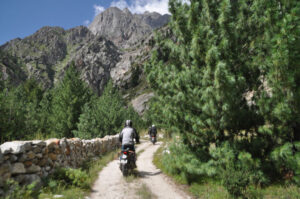
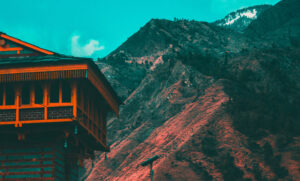
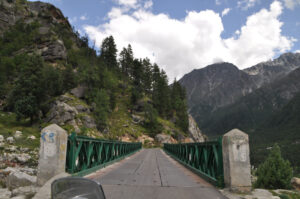
Kalpa in Kinnaur is noted for its magical sunset views! The mornings and evenings in the regions are absolutely surreal as the whole place gets drenched in the pretty shades of red, golden and yellow. Do not miss morning sight of Kinner Kailash Peak, there is also a famous natural rock Shivling. Being the main village of Kinnaur, Kalpa is home to some ancient temples. Besides, the place is also famed for its apple orchards.
Reckong Peo also famous as the Land of the Gods, Peo is a Himalayan beauty where Mother Nature dwells in all its glory! The place is so beautiful that people believe that Gods must have lived here at some point of time. The town is noted for its apple orchards, deodar trees and pine trees. We shall visit Kinnaur's most famous Chandika Devi Temple at Kothi, which is situated on the main road for Nako. The temple is popular as Devi Kothi and has beautiful wood carvings and silver plated doors.
if you are a foreign national visiting the regions of upper Lahaul, Spiti Valley & Upper Kinnaur, then you are required to get the inner line permits for these protected areas nearby international borders. These inner line permits are issued from District Magistrate offices located in Shimla, Reckong Peo, Kullu & Keylong. Even though Indian nationals are not required to get any permits to visit upper Kinnaur or Spiti, it is highly recommended that you carry a valid photo ID proof of your nationality on your road trip to Kinnaur – Spiti. This region is unlike Ladakh, where Indians also need to apply for an inner line permit for Leh Ladakh to visit areas near the International border with Tibet.
From here on Buddhist Prayer flags adorned the Pontoon bridges, fluttering vigorously in the unrelenting breeze. As we ascended into the Spiti Valley, the atmosphere grew more rarefied and the scenery more barren. My lips remained parched throughout the journey. Groups of BRO laborers stationed by the roadside, predominantly hailing from the impoverished state of Bihar, Jharkhand gazed at us from behind dark shades that protected their eyes from the harsh glare. Since we actively support the local community wherever we ride, you'll observe that we make a point to stop and engage in friendly conversations with the Road workers who diligently ensure the safety of our roads. There will be some gifts or Food items for them.
We came across the village of Pooh and couldn't resist taking some photos. Beyond this point, the pine trees disappeared, and the hills surrendered their struggle to maintain any semblance of greenery. A sign, displayed in both English and Hindi, boldly proclaimed that we were journeying on the most dangerous road in the world. By now you know what they mean by Shooting Stones.

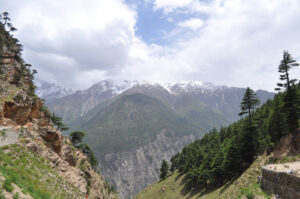
Another small magical village in upper Kinnaur, Nako is all about soul soothing natural landscapes in Hangrang Valley. The village is a perfect spot for adventure seekers, trekkers and nature lovers in general. Nako Monastery in the upper part of the village and the high altitude Nako Lake are important landmarks. This lake is seated on the slopes of the Reo Purgyil Mountain of the Srikhand range that is located in the Himalayas of northern India.
On the western edge of Nako, Nako's Gompa combines recent monastery buildings with elements that date back to the 11th century. Inside are some fine murals and sculptures in similar styles to those of Spiti's famous Tabo Gompa, as well as festival dance masks. Like Tabo Gompa, this is believed to be one of over 100 monasteries founded by Ringchen Zangpo, the 'Great Translator', the key figure in the second propagation of Buddhism in Tibet in the 10th and 11th centuries. (The first was in the 8th century.)
After Monastery visit, we shall head out for Tabo via Maling Nallah and Sumdo. Some distance from Nako is a village called Tashigang, where it is believed that Guru Padmasambhava meditated & preached to followers. We will further ride to Sumdo where our inner line permits will be checked again. From Sumdo, the Tibetan border is just a few kilometres. We shall then proceed to Tabo in the afternoon.
The towns of Tabo and Kaza will serve as our night halts in Spiti. These settlements comprised of Mud Houses a blend of conventional white-painted mud-and-straw structures, featuring flat roofs reinforced with branches, as well as mismatched contemporary concrete buildings. We try our best to make sure your Motorcycle Trip to India is fine balance between Culture Trip and Himalayan Adventure. In the pas our Royal Enfield UK Bikers loved living along with Tribal families.
Note: Ensuring proper hydration during long road trips is vital for bikers, not only for maintaining energy levels and overall well-being but also for managing Acute Mountain Sickness in mountainous regions. Hydration plays a significant role in promoting optimal blood flow, enabling the body to eliminate waste and regulate temperature. Additionally, well-hydrated blood carries essential nutrients to support efficient physiological functions, including proper brain function. Adequate hydration also aids in combating fatigue, enhancing concentration, and mitigating the negative effects of exhaustion. By prioritizing hydration, bikers can optimize their performance, combat AMS symptoms, and maintain a focused and alert mindset throughout their Moto journey.
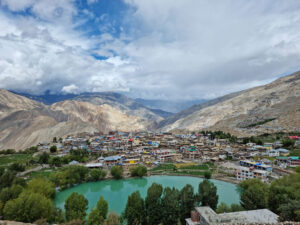
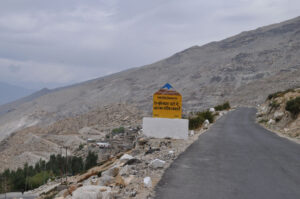
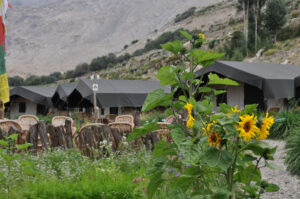
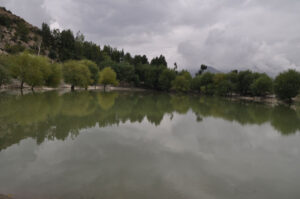
Tabo is a small town in the Spiti Valley on the banks of the Spiti River in Himachal. The Himalayan town surrounds an ancient Buddhist monastery which, according to legend, is said to be over a thousand years old and often referred as Ajanta of the Himalayas. In fact, it is the oldest monastery in India & the Himalayas that has been functioning continuously since its inception. It is one of the oldest Buddhist pilgrimage centres in the Trans-Himalayas region. Participating in the morning prayer at Tabo monastery would be a great start for your day, provided you can wake up early as the prayer starts at 6am. We can ask the Lama to arrange a monk to guide through the monastery.
One must not miss the 6:00 AM morning prayer when the chants of the Buddhist monks reverberate through the walls of the assembly hall and soothe senses. The cliff above the Tabo Chos Khor monastery also houses some peaceful caves where monks and lamas sit in deep meditation. Tantric rites are also performed within the compound. You have free time in the afternoon to enjoy the very peaceful atmosphere of Tabo. Taste the delicious Tibetan food, visit the library of the monastery, roam around the village, go through the fields. A very soothing visit.
The Chos Khor monastery was established to preserve and protect the Buddhist legacy and hence is now an advanced centre for Buddhist learning. The Serkong School was established on 29 May 1999 and is currently successfully moulding the futures of 274 children! with the aim of helping to preserve the tradition of Spiti Valley and to give local young people a modern education. Half of the costs of running this school are borne by the government, and the other half comes from donations and fees.
During our journey in Himalayas, we'll carve out meaningful time to immerse ourselves in the spiritual and community aspects of our adventure. Our visit to the local monastery promises heartwarming experiences. We'll have the privilege of engaging with the school children, providing them with a glimpse of our moto adventure and experiences in the mountains. Conversations with the esteemed head monk will grant us insight into the rich cultural tapestry of Spiti.
One of the most delightful aspects of our visit will be the opportunity to connect with the monastery's vibrant and cheerful young monks. We'll join in their playful activities, sharing laughter and stories that transcend language barriers. As a gesture of goodwill, we'll also present them with thoughtful gifts, which have been generously contributed by Motorcycle Clubs in UK & supportive Royal Enfield Dealers in UK. These gifts will serve as a symbol of our appreciation for the warm welcome we've received and our commitment to fostering positive connections within the communities we encounter on our Motorcycle Adventure in India."
Note: We deeply appreciate our riders for selecting lodging and other amenities that reflect the core values of Nomads, where we actively promote and celebrate local art, culture, heritage & language. During our home stays in Spiti, we will have the opportunity to gather in the evenings and listen to captivating mountain stories shared by local folks. Perhaps, we may even have the pleasure of experiencing some enchanting Spitian folk songs.

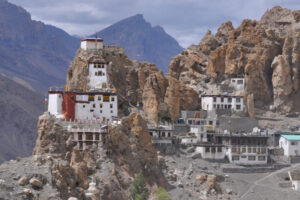
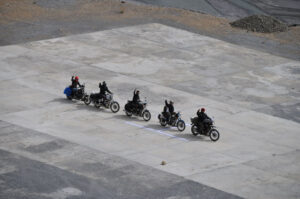
Dhangkar the old capital of Spiti is noted for its clifftop monastery and lake. Set on a pink, brown hilltop, the Dhankar monastery overlooks the confluence of the Spiti and Pin rivers. One can enjoy trekking and hiking in the mountains here. But make sure you enjoy the sunset views in the regions as it is quite spectacular and surreal!
The new Gompa at the base of this cliff is the practicing monastery now. The old one is a treasure trove that conserves the energy of the past prayers. World Monuments Fund has included Dhankar Gompa in 100 most endangered monuments in the world. I hope it holds on for a few more generations to admire it. Some places it was written that no more than 3 persons should go up on the rooftop at any one point in time. You can imagine how fragile the structure must be.
Note: Himachal Pradesh boasts numerous picturesque locations, and it is important to capture those memorable moments. Don't forget to take a group photo of all the riders at Dhangkar Helipad, a few kilometers away from the monastery, during our ascent. We have a list of designated places where we gather our riders for group photos, offering unique backdrops beyond the standard locations.
If you're interested in participating in and supporting a charitable ride through the enchanting landscapes of Spiti, we encourage you to reach out to our teams in both the UK and India. They will be delighted to provide you with comprehensive information and assist you in getting involved in this meaningful endeavour.
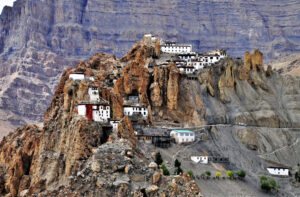
Pin Valley is a stunning valley situated in Lahaul Spiti, Himachal Pradesh, renowned for its Himalayan wildlife reserve, Pin Valley National Park. Carved by the Pin River, it surprises visitors with its distinct ecosystem, setting it apart from the rest of Spiti. The valley's unspoiled natural beauty, complemented by snow-capped mountains in the background, makes it an irresistibly charming destination. Vibrant flowers, sunny weather, miles of seclusion, and tranquil silence all combine to create a magical ambiance that allows Explorers to lose themselves in its enchantment. Make sure to include Pin Valley in your bucket list & follow this comprehensive itinerary for a perfect Pin Valley experience.
The valley comprises approximately 17 villages with a total population of around 2,000 people, most of whom follow Indo Tibetan Buddhism. Pin Valley is home to several endangered and rare animals, including the elusive Snow Leopard. While it remained relatively unknown until a few years ago, the rise of tourism in Spiti has led to an increasing number of visitors exploring Pin Valley as well. Among the villages, Sagnam stands as the largest, but Mud Village is the main tourist attraction. The valley is dotted with gompas and stupas that are well worth a visit, with Kungri Monastery being the most renowned.
As you ride from Dhangkar towards Kaza, you will encounter a road branching off towards Pin Valley at Attargo Bridge. This road crosses over to the other side of the Spiti River, leading straight to Pin Valley, running parallel to the Pin River. After immersing ourselves in the serene atmosphere of Dhankar Monastery, we will hop onto our Royal Enfield Himalayans and head towards another remarkable monastery nestled in Pin Valley. Kungri Monastery, constructed around 1330 AD, holds the distinction of being the second oldest monastery in Spiti and follows the Niyangma sect of Tibetan Buddhism. Once we have explored the spiritual wonders of Kungri, we will embark on a brief bike ride to Mud, the final village within Pin Valley. Serving as the last accessible motorable village in the valley, Mud acts as an ideal starting point for road trips, leisurely trekking, or embarking on the challenging Pin Parvati & Bhabha Pass treks leading to the captivating regions of Kullu and Kinnaur.
If you wish to witness rare Himalayan flora and fauna during your adventure tour in India, Pin Valley National Park is a must-visit destination. This Himalayan National Park is a paradise for wildlife enthusiasts, housing some of the rarest species such as the Snow Leopard, Bharal (Blue Sheep), Red Fox, and more. The national park is also abundant with medicinal plants, making it an essential addition to various Spiti Valley tour itineraries.
Note: Himalayan Motorcycle journey often attracts a community of like-minded adventure riders. Sharing the joy of conquering mountain roads with fellow riders creates a sense of camaraderie and fosters new friendships and connections. It is an experience that leaves a lasting impression and holds a special place in the hearts of those who embark on such journeys.
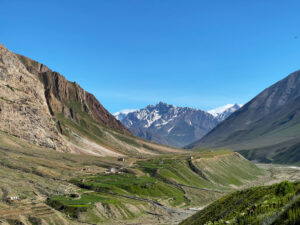

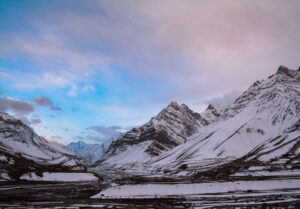
Kaza is a small town in the Spiti Valley with lots of interesting places around it to visit. At Kaza we can visit the Kye Monastery-the oldest and biggest monastic complex standing on the hill in the Spiti valley. Kibber national park and Pin Valley national park are two other interesting adventure Bike Riders love to visit. Kibber Wildlife Sanctuary is the only wildlife sanctuary in India located in a cold desert.
Kibber, a himalayan village is known for being one of the highest motorable villages in the world. It is situated at a height of about 14,200 ft in the Himalayas at about 16 km from Kaza. Kibber village is built in a narrow valley on top of a limestone rock. The village has around 80 houses, made of stone unlike the mud or adobe brick extensively used elsewhere in the Spiti valley. All basic amenities are available at Kibber village. The main occupation of people here is agriculture and animal husbandry in summer and knitting and handicraft in winter. Komic known as the highest village in the world, Komic in Spiti is set at Situated at an altitude of 14,025 ft above sea level. The drive from Kaza to this tiny Himalayan hamlet is equally mesmerising! Green fields and snow-covered peaks are the highlight of this pretty village. The colourful monastery is said to be over 500 years old and is home to many lamas.
Langza is probably one of the most picturesque villages in Spiti Valley set at an altitude of 14,400 ft. You’ll be greeted with the calming views of green fields if you visit post monsoon. The mud villages here are a sight to behold and villagers are equally welcoming. The village has an ancient Lang or temple, which is regarded as the headquarters of all the Deities of the Spiti Valley. Langza Village is primarily dominated by the statue of Lord Buddha, overlooking the valley, an ancient gompa, and mud houses that the tourists can see during their visit to the village, this place is very rich in fossils of marine animals & plants that were found here millions of years ago and this is why many geologists and anthropologists visit the village each year to do research and to dig out more details about the fossils.
Note: By now, you've likely realized that your tour stands out as one of the premier motorcycle adventures in India. However, as we transition into the off-road segment of our journey, the challenges and exhilaration intensify. While exploring remote Spiti villages, extra caution is essential, especially when navigating downhill stretches where the road surface can be quite unpredictable.
To illustrate the importance of vigilance, consider the incident involving one of our fellow riders. In the unforgiving terrain of Spiti, even the slightest error can have significant consequences. In this case, a rider abruptly changed lanes without signalling, resulting in a serious accident that left her with multiple fractures in her clavicle and a dislocated fragment in her thoracic region. It's a stark reminder that Spiti's landscape demands unwavering attention and skill.
To mitigate such risks, some of our riders from the UK opt for off-roading training in UK before embarking on these challenging road expeditions in India. It's a proactive step that underscores the dedication to safety and preparation within our motorcycle community.
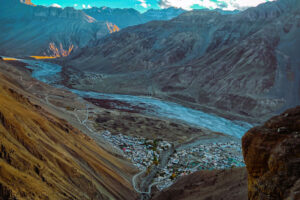
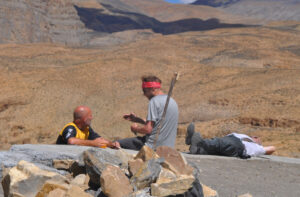
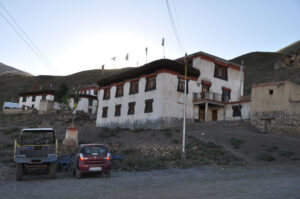
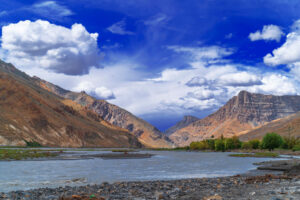
Kye Monastery situated in splendid seclusion atop a hill at an altitude of 13,668 ft above sea level. Ki Gompa, is an awe-inspiring sight that seems to emerge from the rugged terrain like a timeless sanctuary. Established over a millennium ago, this ancient Indo Tibetan Buddhist monastery is not only one of the region's most iconic landmarks but also one of the most significant centres of Buddhist learning in the Himalayas. Rugged pathways guided us to the pristine, whitewashed structures of the monastery. We navigated a maze of dimly lit corridors until we emerged into a sun-kissed courtyard. Here, amidst the serenity, we observed around 300 resident monks engrossed in their studies, punctuating their learning with resonant claps—an immersive scene that seemed to unfold regardless of our presence, or perhaps they were simply lost in their devotion. The echoes of their melodic chants drifted on the gentle breeze, creating a mesmerizing and tranquil atmosphere. Ki Gompa stands as the valley's largest monastery and holds great significance as a hub for Buddhist lamas' religious training. The silence that envelops this place is truly unparalleled—a unique serenity that resonates deeply.
Kye Monastery in Spiti is not only a testament to architectural brilliance but also a harmonious integration with the surrounding natural beauty. It's a place where history and aesthetics intertwine, leaving visitors in awe of its timeless allure. Don't forget to explore the monastery's ancient library, which houses an impressive collection of Buddhist scriptures and texts.
A short ride from Kye Monastery brings you to the charming village of Kibber, often touted as one of the highest inhabited villages in the world. Nestled amidst the towering peaks of the Himalayas, Kibber presents a unique opportunity to experience the local way of life in this remote corner of India. As you wander through the narrow lanes of Kibber, you'll encounter traditional stone and mud-brick houses, each adorned with prayer flags that flutter in the mountain breeze. The warm smiles of the villagers welcome you, offering a glimpse into their simple yet resilient lifestyle. Kibber is not only known for its scenic beauty but also as a base for treks and hikes to nearby high-altitude lakes and remote villages. The pristine landscapes surrounding Kibber provide a stunning backdrop for outdoor enthusiasts and photographers. Whether you're seeking spiritual solace at Kye Monastery or a taste of rural life in Kibber, both these destinations offer unique and enriching experiences that make your Spiti Valley expedition truly unforgettable. As you continue your motorcycle journey through this remote Himalayan region, you'll encounter more hidden treasures, each adding to the tapestry of your adventure in Spiti.
Reaching Ki Monastery marked a significant juncture in our journey, prompting us to contemplate the long trip from UK. In our connected, congested world, enduring 12 arduous days of Adventure travel, braving rickshaws, buses, cliffs, and goats to reach such a serene place, felt like a price worth paying.
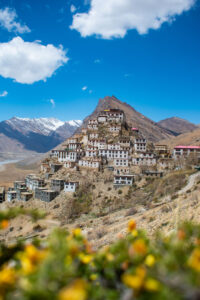
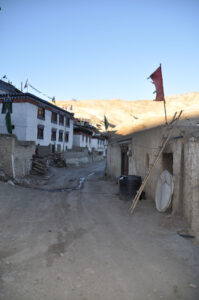
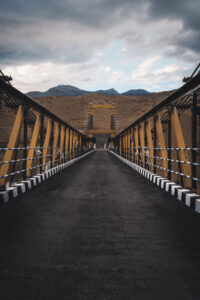
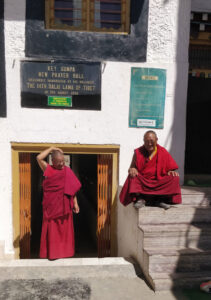
Kunzum la forming the watershed between Lahaul & Spiti, this 14,930 ft high mountain pass, accessed by multiple switchbacks, is topped by a grassy area where stupas are strewn with fluttering prayer flags. Local drivers and even the Himachal Roadways buses briefly divert from the road to perform a respectful circuit around them. The scenery is marginally better coming from Kaza as you approach the pass climbing through a yak meadow with white-top peaks behind.
The ride to Kunzum Pass is an adventure, taking you through challenging yet incredibly rewarding terrain. As you ascend into the higher altitudes, you'll be treated to panoramic views of snow-capped peaks, rugged valleys, and pristine landscapes that stretch as far as the eye can see. The Bara Shigri glacier, whose name signifies ’boulder-covered-ice’, flows northwards and debouches into the Chandra River where its southerly course is deflected westwards, close to the Spiti border.
At the summit of Kunzum la, you'll discover the sacred Kunzum Mata Mandir, a place of reverence for both locals and travellers alike. Taking a moment to offer your respects at this charming temple, dedicated to the guardian deity of the pass, is a humbling experience. Kunzum Pass is adorned with traditional Tibetan chortens and colourful prayer flags that flutter in the crisp mountain air. These symbols of spiritual significance add to the pass's serene and mystical ambiance, inviting you to pause, reflect, and soak in the unique energy of the Himalayas.
The Nomads Riding Crew had traversed the Himalayan route numerous times, possessing an intimate familiarity with every twist & turn and attraction along the way. Nevertheless, they stressed the importance of remaining vigilant on Indian roads, prompting the Nomad’s Road Captain to conduct a brief safety demonstration, intended for the benefit of the entire Himalayan expedition.
Note: Time to reflect on your training at Off roading School specially UK Riders and Australian Bikers, now we will see how well you trained yourself in bike handling and manoeuvring skills. We do recommend to some riders such courses as they fill your riding armoury with tricks and techniques to help your overland adventure be safer and more fun. Spiti Valley Road Trip is Nomad Bikers flagship trip from selection of tours in Himalayas where Adventure Riders can put their skills to the test in some of the best off-road environments on the planet.
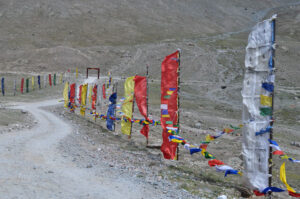
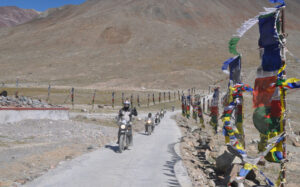
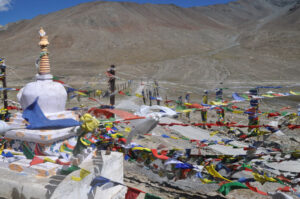
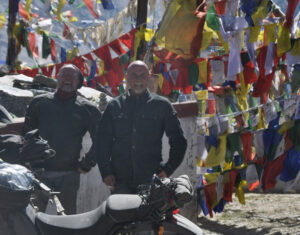
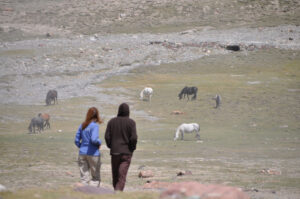
Descending from Kunzum La Pass towards glacial lake Chandra taal can be a test of your riding skills, but the Royal Enfield Himalayan's engine restriction feature comes to your aid. By judiciously downshifting, you can maintain control and reduce speed without relying on excessive throttle. In cases of steep slopes, when you're still moving too swiftly in first gear, using the engine restriction becomes imperative on these mountain roads. We venture beyond Kunzum La Pass and journey towards the glacial expanse of Chandra taal. This trail takes us away from the beaten path, where motorable roads yield to nature's untouched beauty.
Chandra taal, known for its captivating metamorphosis, changes colours like an artist's palette—shifting from emerald blue to bluish green and even crimson red. Road Trip to Himalayas would be incomplete without camping at Chandra Taal. On clear nights, gaze skyward to witness the celestial spectacle, where the Aakash Ganga (The Milky Way Galaxy) and meteorites grace the canvas of the night sky. When night falls over Chandra taal in highlands of Himachal, a celestial masterpiece unfolds. Away from the city lights and nestled amidst the towering Himalayas, this pristine high-altitude lake offers an unrivalled opportunity for astrophotography. The clear, unpolluted skies above Chandra taal create an enchanting backdrop, allowing you to capture the Galaxy in all its glory. Every star, constellation and meteor becomes a subject of your lens, as you embark on a journey to capture the cosmos. This is astrophotography at its finest—a chance to freeze the beauty of the universe in a single frame and make your Spiti Valley adventure even more remarkable.
The route to Rohtang pass unfolds as a mind-blowing off-road expedition, taking you through uncharted territories of the Himalayas. The Chandra Valley stretch is one of the Best Off-roading trails in India, spanning over 200 kms, offers no metalled roads; instead, you navigate riverbeds, mud beds, melting glaciers, slush, and fast-flowing springs, locally known as 'nalas.' It's a heart-pounding, goosebump-inducing experience that reveals vast valleys, pristine glaciers, vibrant landscapes, autumnal hues and a sense of boundless wilderness. This is the very essence of Spiti Valley—an adventure that sparks wonder and leaves an indelible mark on your soul. As you venture forth, your mind meanders and marvels at the sheer beauty that surrounds you. Your eyes work tirelessly to absorb every facet of this extraordinary landscape, making your Spiti Valley tour an unforgettable journey to the heart of nature's grandeur."
Note: While navigating the rugged terrain of Chandra Valley, safety is paramount. It's strongly advised to dedicate time at each stop to meticulously examine your adventure motorcycle & riding gear. This vigilance becomes especially crucial amidst the challenging mountainous conditions. By adhering to this diligent routine, you not only demonstrate a steadfast commitment to safety but also guarantee that any essential modifications or repairs are promptly addressed, ensuring a secure and enjoyable journey through the demanding terrain.
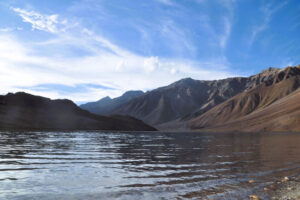
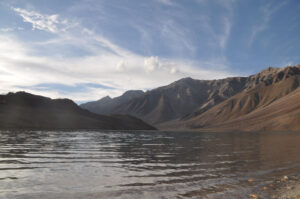
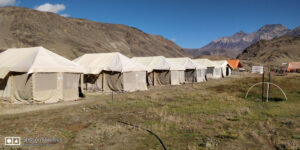
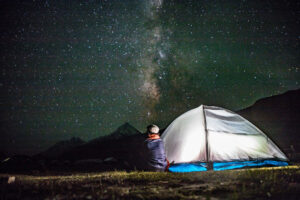
As the road gradually ascends towards the Rohtang La Pass and subsequently descends towards the charming town of Manali, it's essential to emphasize the importance of caution, especially during the downhill leg of our expedition. Manali, nestled alongside the meandering Beas River, unveils a world of natural beauty and adventure. Manali is not just a destination; it's an experience waiting to be embraced. For those with the luxury of time, the town offers a range of captivating spots to explore. From the exhilarating Solang Valley to the historic Naggar Castle and the rejuvenating Vashisht Hot Springs, there's something for every traveller’s taste.
Manali's magnetic pull is not restricted to any particular season—it beckons adventure enthusiasts year-round. Backpackers are in for a treat, particularly in Vashisht and Old Manali, where you'll find numerous adventure travel companies agencies catering to your every desire. Whether it's trekking, climbing, rafting, or skiing, the options are as diverse as the seasons themselves. While Manali can become bustling during peak tourist seasons (mid-April to mid-July, mid-September to mid-October, and over Christmas and New Year), it's a delight for intrepid travellers to venture off the beaten path. In November, when clear skies bless the town and prices take a dip, Manali reveals its budget-friendly side. Yes, you'll need to brace yourself for the cold and the temporary closure of a few eateries, but the reward is a tranquil experience amidst nature's splendour.
For those whose hearts beat to the rhythm of the throttle, biker cafes in Manali are vibrant place to hang around. These are places where you can connect with hardcore riders, sharing tales of your journeys and feeling more at home than anywhere else. The Ride Inn Cafe, a cherished favourite in Manali, is a testament to the motorcycling lifestyle. Here, everything revolves around bikes—from the inventive use of used bike parts in lighting to the motorcycle-wheel tables and bike-saddle chairs. The showstopper? A scooter buffet table. Surrounded by the beauty of an apple orchard, it's an experience like no other. In Manali, every road is an adventure waiting to unfold, and every corner holds a surprise. Whether you're drawn to the mountains, the thrill of the road, or the camaraderie of fellow riders, this town in the lap of the Himalayas has something extraordinary to offer.
Manali is a melting pot for motorcyclists, where riders hailing from diverse corners of the globe come together to swap tales of their epic adventures and the machines that carried them through. Whether it's Triumph bikers of uk who conquered the North Coast 500, an moto adventurer with Dakar Rally experience, or Australian riders with a passion for their own circuit, you'll find a vibrant tapestry of riders with a shared love for the open road and the thrill of two-wheeled exploration. Among the eclectic mix of riders, you'll come across Indian ariders mounted on their adv bikes, making the pilgrimage through this circuit every 2-3 years, eager to uncover fresh trails. Notably, the Spiti Valley circuit also draws a significant number of cyclists, further diversifying the adventurers who flock to this breathtaking region.
Note : In Manali, the resounding thump of Royal Enfield engines echoes through every corner of the town, offering an authentic glimpse into the heart of moto culture and adventure lifestyle. While Solang Valley beckons with its skiing adventures, the Parvati Valley promises thrilling treks that fuel the spirit of exploration. Alongside, the majestic River Beas invites adventure enthusiasts to partake in a myriad of water sports, from white-water rafting to river crossings and rappelling, adding an extra layer of excitement to your Himalayan experience.
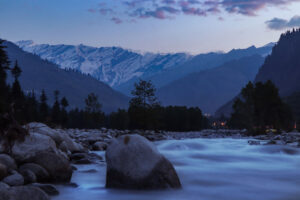
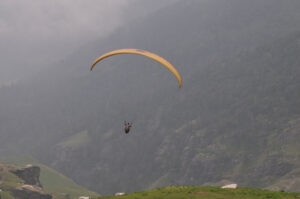

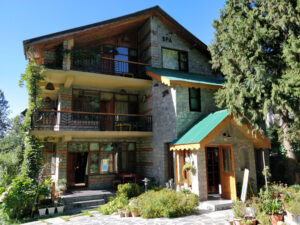
Parvati Valley of Kullu is one of the most scenic Himalayan destinations not only in Himachal Pradesh, but in the whole of India. This picturesque valley derives its name from the Parvati River that gracefully winds through its enchanting landscapes. As you arrive in Parvati Valley, your eyes are greeted by breathtaking views of majestic mountain ranges, adorned by charming villages and serene meadows. When the valley's main attraction lies in its remarkable natural beauty, it is an experience that simply cannot disappoint. Let us delve into some of the most exquisite sights that Parvati Valley has to offer.
Stepping foot in Parvati Valley reveals a sense of tranquility and serenity in the air that is truly indescribable. To soothe your weary spirit, there is no better recipe than embarking on the Parvati Valley trails. Here, the pure and unpolluted mountain air harmonizes with delectable Israeli cuisine, creating a unique ambiance often referred to as the "Amsterdam of India." After relishing the calming beauty of this Himalayan valley, don't miss the opportunity to explore the happy paradise of Chalal.
Parvati Valley should undoubtedly be on any riders bucket list in highlands of Himachal, as it presents an abundance of attractions including cascading waterfalls, rejuvenating hot springs, and captivating hiking trails that provide awe-inspiring vistas of the surrounding scenery. This destination holds great appeal among backpackers and adventure enthusiasts alike, offering thrilling opportunities for open parties, rave music, trekking, rock climbing, and river rafting. If you seek the experience of forest bathing, this is the ideal destination. However, forest bathing is more than simply being in the forest—it involves immersing oneself mindfully in the forest environment.
Parvati Valley boasts a remarkable cultural heritage, with numerous ancient temples and shrines nestled within its scenic surroundings. Among these, the renowned Kheer Ganga Temple and Manikaran hold special significance. Nestled within Parvati Valley, the charming village of Kasol captivates visitors with its stunning scenery, picturesque hiking trails, and vibrant backpacker culture. This village is renowned for its lively nightlife, featuring a plethora of cafes, bars and music festivals that attract young crowds from across the globe.
Tosh, another beloved destination for backpackers, enthralls both domestic and international travellers. Located in Parvati Valley, Tosh is a visually captivating village renowned for its breathtaking views and challenging trekking trails.
Note: Read our complete article on Parvati Valley Circuit. If you have few days in Manali then Day ride from Manali is possible provided you adhere to proper schedule.
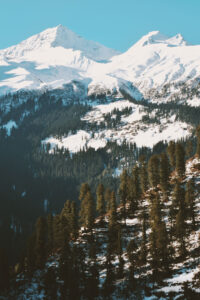
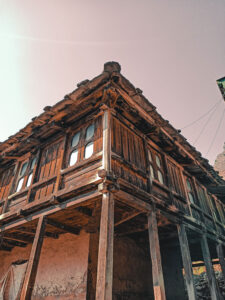
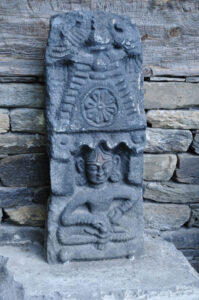
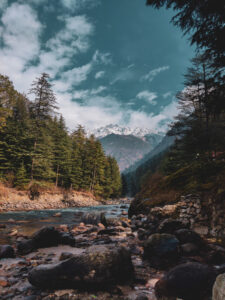
Chandigarh offers a diverse range of experiences that cater to various interests and preferences. Here are some notable experiences you can have in Chandigarh:
- Explore the Rock Garden: Created by artist Nek Chand, the Rock Garden is a unique attraction featuring sculptures made from recycled materials. Take a leisurely stroll through the garden and marvel at the creativity and artistry on display.
- Visit Sukhna Lake: Sukhna Lake is a popular spot for locals and tourists alike. Enjoy a peaceful boat ride on the lake, go for a jog or walk along the promenade, or simply relax and take in the serene surroundings.
- Discover the Capitol Complex: Designed by renowned architect Le Corbusier, the Capitol Complex is an architectural marvel. It houses several government buildings, including the iconic Capitol Building, Secretariat, and High Court. Explore the complex and admire the modernist design and grandeur.
- Shop at Sector 17: Sector 17 is a bustling commercial hub and shopping district in Chandigarh. Indulge in some retail therapy as you explore the various shops, boutiques, and malls offering a wide range of merchandise.
- Enjoy Gardens and Parks: Chandigarh is known for its beautifully landscaped gardens and parks. The Rose Garden, Zakir Hussain Rose Garden, and Botanical Garden are must-visit destinations for nature lovers and those seeking tranquility amidst lush greenery.
- Experience Chandigarh's Food Scene: Chandigarh offers a vibrant culinary scene with a wide range of dining options. From street food stalls to fine dining restaurants, you can savor a variety of delicious Punjabi, North Indian, and international cuisines.
- Attend Cultural Events: Chandigarh hosts various cultural events and festivals throughout the year. Check the local event calendar to see if there are any music concerts, art exhibitions, or cultural performances happening during your visit.
- Take a Heritage Walk: Join a guided heritage walk to explore the city's architectural gems, including the famous Open Hand Monument, Government Museum and Art Gallery, and various other landmarks that reflect Chandigarh's rich history and culture.
Whether you're interested in art, nature, architecture, shopping, or food, Chandigarh offers a range of experiences to cater to different preferences and make your visit memorable.
Note: Ideally this is the place for an overnight stay at a hotel and departure next day. Do share your Himalayan Expedition’s pictures and Feedback on Spiti Valley Tour with us.



As you wrap up your unforgettable Spiti Valley motorcycle expedition, there's still much more to explore and enjoy in the region. While your motorcycle adventure may be concluding, the memories and experiences will linger, and Spiti will forever hold a special place in your heart. At the end of a motorcycle trip to Highlands of Himalayas, various activities and procedures may take place, depending on the specific Riders and itinerary. Here are some common things that might happen at the conclusion of a motorcycle trip to Himalayas:
- Your Final Moments in the Saddle: As your Spiti Valley motorcycle expedition nears its end, the last day typically involves a ride back to your starting point or a designated endpoint. Riders will either retrace their route, reliving the adventure, or opt for an alternate path, adding a final touch to their journey.
- Celebration and Camaraderie: A Farewell to Remember every motorcycle tour concludes with a memorable closing ceremony or gathering where participants come together to share their unforgettable experiences, amusing anecdotes, and cherished highlights from the trip. It's a time for celebration, acknowledging the extraordinary journey you've undertaken.
- Feedback and Improvement: Your Voice Matters Tour organizers highly value your feedback. They often conduct a feedback session, providing you with an opportunity to offer insights on your experiences, tour arrangements, accommodations, and more. Your input is invaluable in enhancing future trips.
- Dining Together One Last Time: The journey comes to a bittersweet end with a farewell dinner party, where riders and the Nomads Riding Crew join in for a final meal. It's a chance to savour local cuisine, share laughter, and bid a fond adieu to your fellow adventurers.
- Commemorating Your Triumph & Certificates of Completion: Participants in Charity Rides and those who conquer high mountain passes receive certificates or tokens that commemorate their triumphant journey—a tangible reminder of your incredible accomplishment.
- Reliving the Adventure & Sharing Memories Through Photos: The sharing of photographs and videos taken during the trip is a cherished tradition. It allows riders to relive their extraordinary journey, capture moments to be cherished, and continue the adventure in the retelling.
- Seamless Transitions & Assisting Your Post-Trip Plans: For British and Australian riders seeking assistance with return travel, transportation logistics, or accommodation arrangements, we're here to help. Keep in mind that using India Post to send luggage back to the UK or Australia may take up to two weeks.
- Moments of Reflection & Capturing the Essence: After the trip, there's often a period of reflection. Adventure bikers take time to contemplate their experiences and the lasting memories created during the journey.
- Responsible Travel & Making a Positive Impact: We prioritize responsible and sustainable travel practices, emphasizing support for local communities and environmental conservation. Your moto journey with noble cause leaves a positive mark on Highlands of Himalayas.
- Building Connections & Staying in Touch: In the spirit of camaraderie, riders frequently exchange contact information with fellow participants and organizers. This ensures a lasting connection, allowing you to share photos, stories and future ride plans.
- Gift an experience: consider the gift of an unforgettable experience to your friends and family. Now is the perfect moment to engage with the Nomad Team to explore special discounts and offers for your loved ones to embark on their own epic motorcycle journey. This thoughtful gesture allows them to embark on their own thrilling journey, creating memories and experiences that will last a lifetime. Whether it's a surprise for a fellow rider or an opportunity to introduce someone new to the world of motorcycling, the gift of adventure is truly priceless.
- Continuing the Adventure & A Journey Worth Replicating: It's not uncommon for riders, hailing from diverse countries such as India, France, Spain, and the UK, to express interest in reliving the journey with loved ones and close friends. Nomad Bikers takes pleasure in organizing group travels for returning clients, ensuring an even more budget-friendly and unforgettable experience. Now, it's your chance to step into the role of a road captain or guide for the Spiti Road trip, creating new adventures and memories on the open road.
If you yearn for the freedom of waking up to a new, breathtaking view every morning, and if the chaotic hustle and bustle of touristy cities has left you weary, then our caravans offer the perfect escape for your mountain adventure. Rest assured, we prioritize your safety and security to the utmost extent.
Spiti Valley, Expedition 2024
28
May
11
June
18
June
20
Aug
03
Sep
Not sure what to do? We will give you a call back
Didn’t find what you were looking for?
Connect with our experts! Get the best itineraries and offers!
Motorcycle Tours That Riders Can’t Resist.
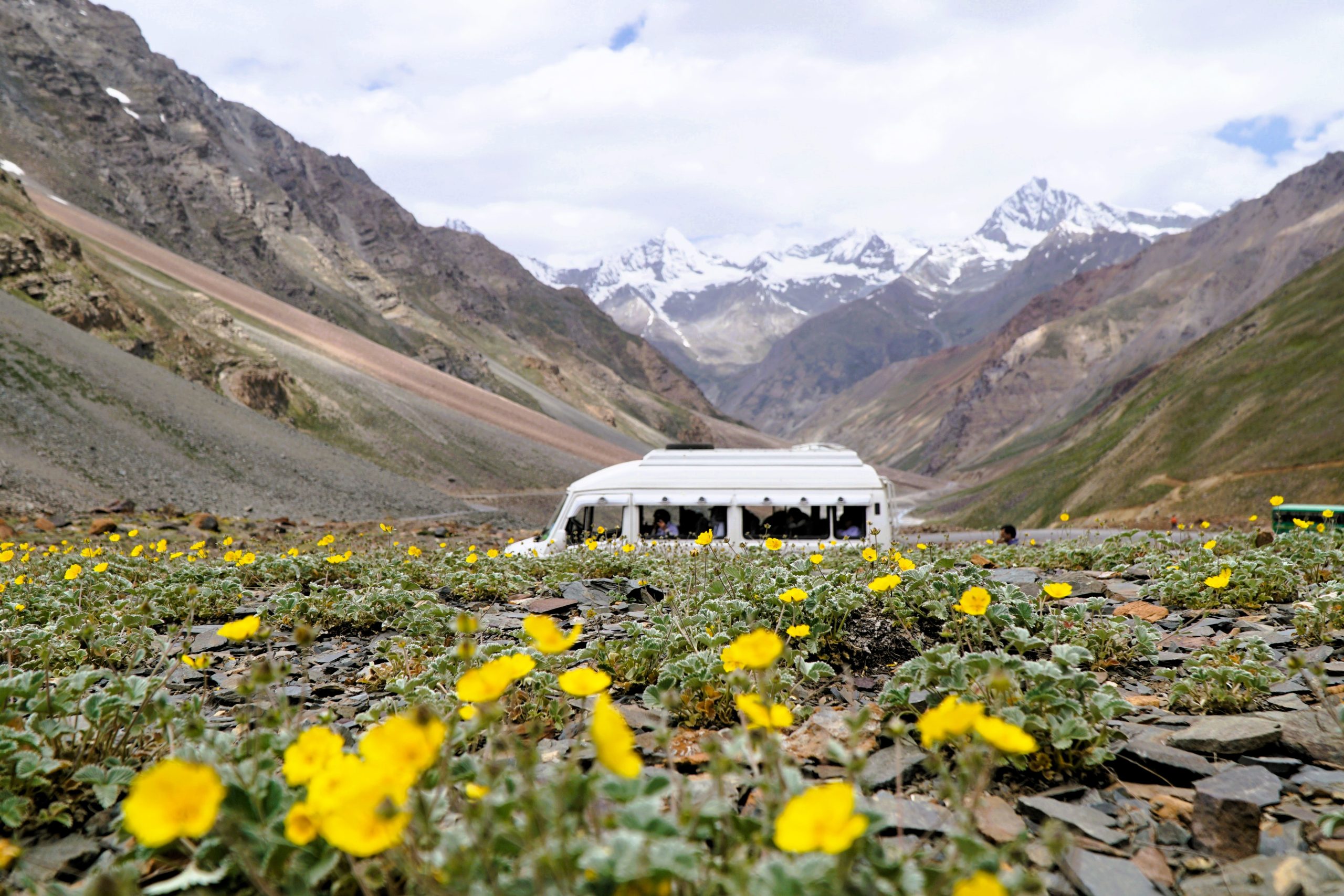
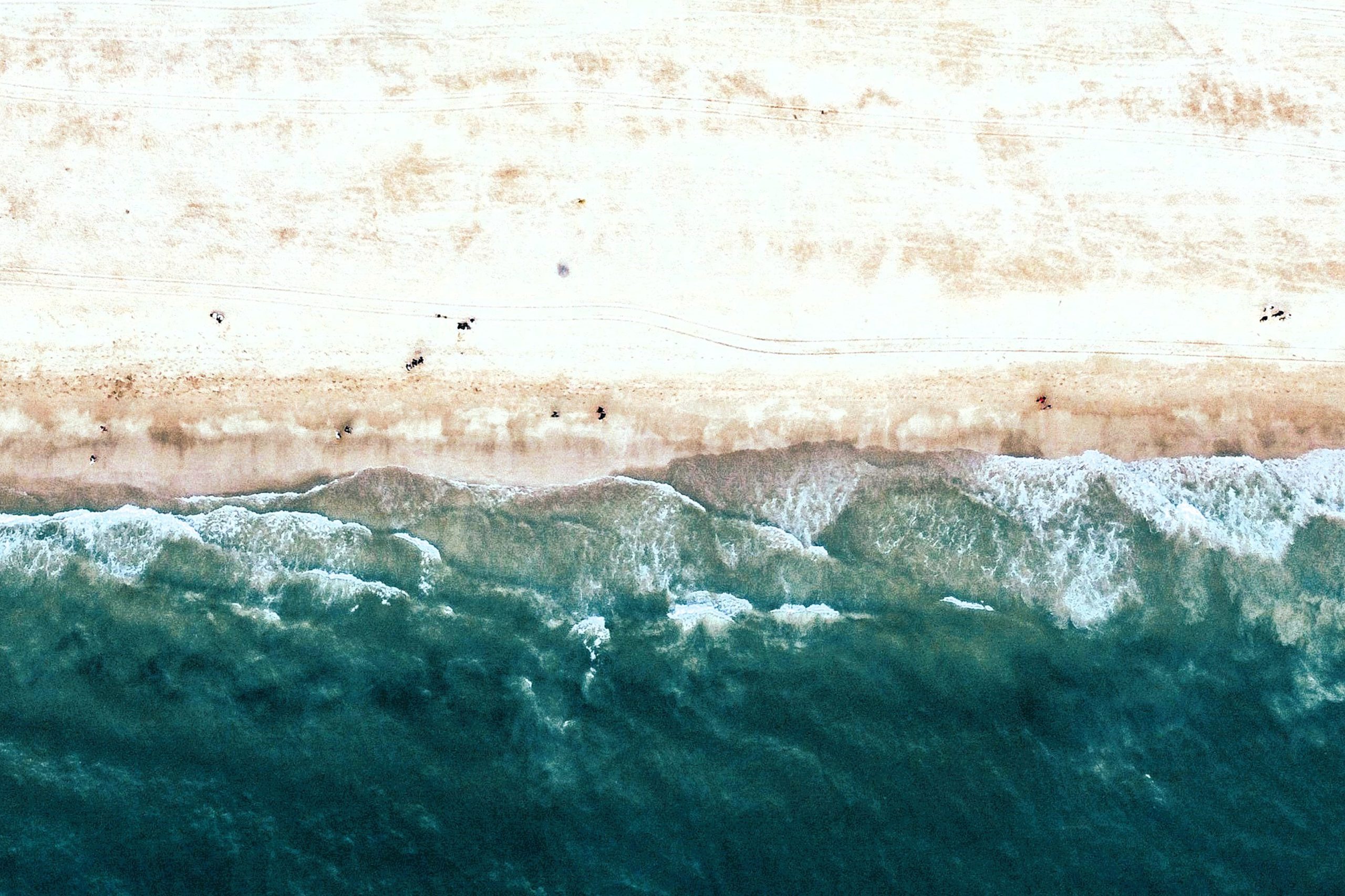
Nomad Tales
Shabad Singh
What an incredible adventure! If you’researching for an unforgettable motorcycle journey
Read More ...Durga Satapathy
The House of Nomads team truly exceeded our expectations when it came to organizing our recent Corporate Field trip in mountains
Read More ...Peter Mulrooney
My recentHimalayan motorcycle journey with Nomad Bikers was nothing short of breathtaking.
Read More ...Steven Scorah
Our adventurous RE Motorcyclists from Manchester had an absolutely unforgettable experience!
Read More ...John Rogers
Are you a passionate Royal Enfield Biker from UK looking to break away from the usual Bikers trails in UK?
Read More ...Read Our Blogs & Roll into Adventure

Subscribe To Our Newsletter for Insider Riding Insights
Stay ahead of the curve! Sign up now for exclusive sneak peeks, the latest trip announcements, gripping rider tales, and unbeatable discounts!




